#also the tour guide told us the tree in the last picture is like 300 years old i think???
Text

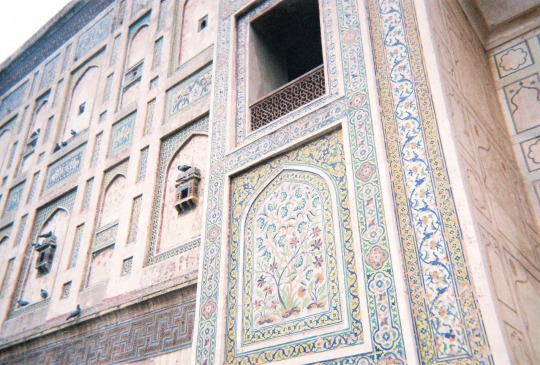

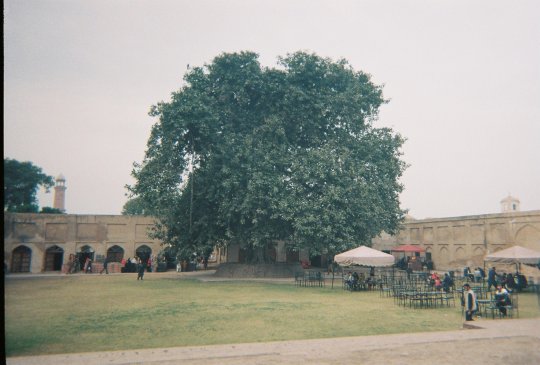
lahore fort on film
#realized i never posted these here i want them on the blog#this is like over a year ago :( I dont miss lahore That much bc it wasn't the best trip lol but looking at these makes me so :((#i wanna go back and go to all the pther historical places and do actual fun cool stuff and take more pictures#the way i went for like 4 months last year and barely did Anything bc it was just . so much family so much just staying at Home#also the tour guide told us the tree in the last picture is like 300 years old i think???#mp#pk
33 notes
·
View notes
Text
May 4
Today we had another bus tour booked, this time, to the Isle of Skye! One of the things I was looking forward to the most about this trip. Skye is not very easily accessible, especially without a car; I considered staying on the island but there isn’t much public transportation and so again a bus tour was the best option! It is not really very close to Inverness making it a 12 hour round trip bus trip to get there. Again, thoroughly justifying my decision not to drive in Scotland because the roads were terrifying, one lane mountain roads with two way traffic covered in potholes with our bus driver flying through with ease.
Our bus driver (larger tour this time, about 30 people and a bus rather than a van) was not Scottish, he was from Lancashire and had an accent reminiscent of the Starks from Game of Thrones or Jamie Tartt from Ted Lasso. He was a grumpy old man but full of facts about the places we were passing. I thought yesterday’s drive was beautiful but I was blown away by the majestic scenery we passed today! (Grey and I each took over 400 pictures of the day! The most scenic day of my life! It was again hard to actually take photos that did the scenery justice; once I noticed something picture worthy immediately we went behind a tree blocking the view, or another car, etc. so I did end up deleting quite a few photos 😂) Grey and I started sitting together but the seats directly across the aisle were empty and so he bumped across the way, which worked out well because usually one of us had a better angle for photos than the other, one side usually being up the mountain and the other down the mountain. we had a brief morning stop to take a ~20 minute hike to a waterfall and another brief stop where I had a delicious raspberry jam and coconut cake and ginger tea with an incredible view of the farmland hills. Yesterday I dressed too warmly; today I may have gone a bit farther the other way and been not quite warm enough, but I would way rather be cold than hot! I warmed up plenty when walking around. there is a very annoying woman on the tour who has been talking non stop to the bus driver for hours of the day. She is the only person who answers when the tour guide asks a question and the grumpy tour guide driver also seems to be very annoyed by her. At breakfast she was loudly chatting with a Scottish couple who lived locally and complaining about the low level of education in the US and how most people where she lives in Las Vegas don’t have bachelors degrees. I’m not sure how likely it is that the sheep farmers she was complaining to have bachelors degrees… but also why spend time complaining about this when you could be talking to the lovely local Scottish couple about literally any other topic lolol.
we stopped at a scenic overlook in the mountains of one of the lochs, which was scenic but was not actually a great place to take a picture because the trees next to the overlook were way too tall!
I learned that loch sometimes means lake but more accurately means body of water- something like 20 % of the lochs are fed by the ocean and aren’t a proper lake. Other things I learned as fun facts from the driver: the isle of Skye, our destination, was expecting 300 million dollars of tourism in 2024. It’s may 4th and they have already surpassed that! He told us about the history of developing the roads and trains through the wilderness of the highlands, including the bridge to Skye. They used to only have a ferry able to take two cars at a time across the water, and then would up with a bridge charging crazy tolls that had to be purchased by the government due to all the protests of the tolls.
Every single bend we went around on the road to Skye and then on Skye and on the way home from Skye was more scenic and picture worthy than the last! It was magical! We went to lunch at Portree which is the biggest town on Skye, overlooking a harbor with colorful houses and filled with touristy shops and restaurants. then we went to hike the Fairy Pools- which has surpassed my previous favorite hike I did in Colorado last summer while visiting Grey as the best hike I’ve ever done! We had 1.5 hours to hike a 3 mile out and back that was down a mountain, up a mountain, back down the mountain, and back up the mountain, all following along a winding mountain river with rock fixtures and waterfalls and plenty of mountainous photo opportunities to boot. One of us had an easier time on this hike than the other; let’s say the one who lives in Denver at a mile elevation and regularly climbs mountains had an easier hike than the one with the sinus infection lol. So I powerwalked on the out part of the hike, planning to go slower on the way back, taking in the view. It was a bit difficult to tell when to stop hiking, but I made it to a waterfall that is the picture when you google “fairy pools” so I figured, good enough! Grey made it much farther but just decided when to turn around based on timing. The trail continued on but was less and less maintained and more and more rocky. We headed back, and I felt like I was dyingI on the last little climb back up the mountain and had to keep stopping very out of breath to enjoy the scenery and recover. Made it back to the top with 9 minutes to spare and enjoyed looking back on the whole hike!
We then stopped at a memorial for the two Scottish men who did most of the surveying and mapping of the mountains on Skye. They have a statue of themselves gazing upward, forever facing the beautiful mountains they once explored. Next to their memorial was a restaurant where Grey and I enjoyed some more whisky- grey asked for the “peatiest scotch they had” and I had a whisky distilled on Skye, a Talisker 10 year. It started to sprinkle just a little bit on the way back, so I couldn’t take pictures for a while out the window but still was able to soak in the view. Last stop of the day was a picture stop at Eilean Donan castle, which juts out on a loch with a great view. It is sort of the ruins of a castle and looks how I would imagine Hogwarts is supposed to look to muggles 😂😂
the last bit we wound down the mountain past more incredibly beautiful mountains and back to Inverness past Loch Ness- we are going back to Loch Ness tomorrow. We had dinner at a random restaurant taking reservations (it is a bank holiday this weekend so people don’t work Monday, and the restaurants are pretty full) it was okay but we were both exhausted so ate super quickly to make it back to the air bnb to pass out!
0 notes
Text
Next stop: PALAWAN!
Before anything else, I just want you to forget about those annoying deadlines. Forget about your unresponsive groupmates, loaded works, and forget about this stressful environment—just for a while. Even for 30 minutes, sit back and close your eyes. Everybody deserves a rest don’t we? Go and maybe…book a vacation? There are lots of beautiful places here in our country and there’s so many to choose from!
You may think that booking a vacation is too much and you might not have enough time and of course, money. No worries! Let this blog be your tour guide to one of the places here in the Philippines that will surely take your breath away for its breathtaking views and stunning tourists spots. Ladies and Gentlemen, the one and only—Palawan.

Here’s a brief information about Palawan. Palawan was cited as the world's best island in the Travel+Leisure (T+L) 2020 World's Best Awards. It is endowed with species-rich, biologically diversified ecology, with teeming forests, tangled mangroves, wetlands, and vivid coral reefs. The island is home to 232 indigenous species, making it one of the world's most diverse ecosystems.
As you all know, Palawan is known for its white sand beaches, clean turquoise waters, coral reefs, and limestone rock formations that would render you speechless. Many tourist spots can be seen in Palawan because of its amazing features and our first destination is El Nido, Palawan. Shall we?

Bacuit Archipelago, El Nido
Ah yes, El Nido, Palawan. Look how beautiful this place is! El Nido has been named one of the best tourist destinations in the Philippines, as well as one of the top-ranked tourism destinations on so many other bucket lists throughout the world. It is known for its lagoons, 100 white sand beaches. Yes, you’ve read that one right. One hundred. And take note—WHITE SAND BEACHES. Not to mention the Bacuit Archipelago and its beautiful islands which can be seen in the picture above.
One of the beautiful beaches here in El Nido is the Seven Commandos beach. Seven Commandos Island was titled after the seven commandos who used to live there, who’s names are carved into the island's rocks.

Seven Commandos Island, El Nido
I mean, who wouldn’t fall for its beauty? Look at those coconut trees aligned across the white sand beach. Look how the sun shines on the warm and crystal clear water. It is truly a feast for my eyes. What a nice place to have a vacation with your loved ones. Just enjoying the view and chilling, relaxing, listening to the sound of the waves, and enjoying the awesome and memorable moment.
But this doesn’t end here. Wanna do something adventurous? I know just a place. It is known for its popular underground cave. Folks, Puerto Princesa, Palawan

Puerto Princesa Underground River, Puerto Princesa
A beautiful limestone karst environment with an underground river may be found in this park. One of the river's distinguishing characteristics is that it flows directly into the sea, with the lowest portion of the river vulnerable to tidal forces. In addition, the area is an important habitat for biodiversity conservation.
Puerto Princesa Underground River is the most popular tourist spot in Puerto Princesa, Palawan. Those cave formations are formed from the dripping minerals above the cave. If you’re thinking if all of these would be worth the visit, oh darling I promise you that it would be an out of this world experience. As you explore deeper into the dark, the clicking of bats and the echoing droplets of water are the only sounds you would hear. Sounds cool doesn’t it? Wait till you read this amazing part of this adventure!

Firefly Watching Tour, Ihawig River
Oh, no honey. Those aren’t stars, but it’s fine. I thought so too. Aren’t they beautiful? Just to let you know, those are thousands of fireflies which can be seen in Ihawig river, in Puerto Princesa, Palawan. Tourists gather in this magical place while having a sit-down supper at the Iwahig Firefly Restaurant, Ka Inato Restaurant, or District Seven Restaurant.
Close your eyes and imagine that you are one of the tourists adoring the beauty of this place. Taking a river excursion along the banks of the Sicsican and Iwahig Rivers and while witnessing innumerable fireflies dazzling along the mangrove trees. Ah, sounds magical. Can’t wait to witness this event someday!
If your thinking that we’re done, then you’re wrong. Let me introduce you to another place here in Palawan. Don’t worry, this would be the last destination so bare with me. I can guarantee you that you would love to know more about this location. Scuba diving. snorkeling. Beautiful lagoons. Welcome to Coron, Palawan!

Coron, Palawan
See? I told you. Coron is a tropical island in Palawan. As the island is most known for its world-class WWII wreck diving, it also has limestone karst landscapes, stunning beaches, crystal-clear lagoons, and shallow-water coral reefs.
Looking for a place to try scuba diving? How about snorkeling? Then voila! You can do it all here. Although you can also do these things in the first two cities in Palawan I have mentioned earlier, this is the best place you could those scuba diving thingies in my opinion.
Do you ever wonder what makes Coron unique from El Nido and Puerto Princesa? Well, here’s the tea. Unlike El Nido, which is known for island hopping, and Puerto Princesa, which is known for underground river excursions, Coron is noted for its distinct tourist attractions. Coron's turquoise waters are home to stunning World War II wreckage, vibrant coral reefs, and a plethora of marine life. So what are we waiting for? Let’s explore the beauty and secrets of our last destination!

Kayangan Lake, Coron
Welcome to Kayangan Lake! Kayangan Lake is known as the “cleanest lake in the Philippines” and some consider it as the cleanest lake in Asia. That's why itis one of the places that you must see in Coron. The water here super clear and clean which makes it perfect for swimming. Kayangan Lake is surrounded by tall limestone formations, so if you want to take pictures of the entire area for your instagram post, all you have to do is climb a 300-step hill and you can have an instagramable shot! Although it's a bit of a hike, the sights are worth it. The lake is warm and welcoming, making it ideal for swimming.
But if you feel like trying scuba diving, here is a place for you!

Coral Garden, Coron
Ladies and gentlemen, this is the Coral Garden, also located in Coron. You can see beautiful and colorful fishes and corals that would literally satisfy your eyes. Because of its colorful view, this is the finest area to go snorkeling. But if you want to go deeper, and you are an experienced diver, this location has depths of 131 feet and is completely filled with beautiful marine life, providing the clearest diving experience you've ever had.
The last place I would show you is something different. There are multiple shipwrecks on this island that were sunk during World War II. This place is called the Skeleton Wreck.

Skeleton Wreck, Coron
In Coron Bay, the Skeleton Wreck is a popular snorkeling area. This little 25m long Shipwreck is also suitable for scuba diving. The Skeleton's top is 5 meters deep, with a depth of 22 meters at the stern. This is a simple dive that is great for novices. It’s like traveling back through time and space as you encounter sunken ships during the second world war. These ships and vessels has restored the growth and development of a magnificent reef. While exploring this reef, you would encounter colorful corals, black and white striped fishes, and other marine life.
Ah, how I wish to go to these places at once! All of them are worth the visit, feast for the eyes, and would surely help you to lessen your worries and relieve stress. Every place will literally take your breath away which is also a perfect place to travel with your loved ones. If you have ever been to one of these places, you sure are lucky. You can always go back and explore to other tourist spots here, especially during summer.

Palawan is full of excitement, mystery, adventures, and most especially—water. There are so much more to visit here in Palawan. More lagoons, hot springs, reefs, and yes, beaches—white sand beaches. Many more adventures to explore and encounter!
I just want you to always remember that it’s not selfish to pick yourself. Learn to rest when you’re already tired and continue when you’re ready. You can do this, fighting!
-shengkamas
#Palawan#ilovepalawan#elnido#whitesandbeaches#nature#vacation#scenery#adventure#CORON#puertoprincesa#travelogue
12 notes
·
View notes
Text
Pura Vida Adventures: A True Story About a Day in the Life

Many people here are true odd-balls. We assumed that we would stick out like two sore thumbs in this small, rural community -- that the people would think we were super weird with our grungy-unabashed hippie gayness -- but we were kind of wrong. People don’t judge us or find us weird because everybody is a rare creature in this community. They are mega hipsters (the Latin American version) without even knowing they’re cool. The most memorable and interesting person we’ve met yet appeared in our life about two weeks ago. He is an extraordinary coffee farmer and tinkerer from Northern Costa Rica named Manuel (pictured above, left). He had been referenced to us several times by our helpful neighbor, Don Juan (pictured above, right), as “the ariete man.” Arietes are amazing old-fashioned machines that use a series of hoses and tubing to redirect natural sources of water to wherever it is needed, often pumping it hundreds of meters up a mountain, all without using any electricity. They told us that he could help us become water self-sufficient, but they did not tell us what a cartoon character he is…
Last week, we went to visit Manuel’s farm, which is close to ours and we arrived to find that his driveway consists of miles of rocky road carved into the side of a mountain. Thankfully our newly-acquired vehicle is 4x4 and just high enough off the ground to handle this boulderous and uneven terrain. As we bounced along in our Tracker, we tried not to acknowledge how utterly impossible it would be to turn back should the need arise...and just enjoy the beautiful scenery of La Amistad National Forest and Volcan Baru in the distance. Our grandpa-neighbor Juan was chillin’ in the backseat verbally processing the crazy ride we were on.
When driving or riding in buses it’s always reassuring to have locals around because they are accustomed to the insanity of the road conditions. They are a thermostat for actual danger on the road.
When we pulled up to the main gate of Manuel’s 500 acre farm, we waited for a while, unsure if he was even aware that we were there. We took the time to check and make sure nothing broke off of the car on the journey, but within minutes he appeared on his moto to let us in. We could feel the buzz of energy and excitement immediately. Manuel was JAZZED to show us his farm. From those first moments we knew that this tour was going to be a way bigger thing than we had anticipated waking up that Sunday morning. He started by showing us his coffee drying area. The harsh midday sun was beaming down and glaring off of ten or more giant wooden-framed boxes covered in fabric and filled with drying coffee cherries. There he literally screamed from the mountaintop about his passion for growing coffee and using the four elements of nature to run his plantation -- earth, water, wind and sun. The intense energy radiating from the sun and Manuel’s spirit made for an abrasive but fascinating start to the experience. After that we drove through pathways lined with luscious vetiver to Manuel’s work shed to learn about the innovative technology he worked with. His shed was dark and cluttered with all kinds of machine components and other odds and ends. Even inside that small space, standing only inches away from each other, Manuel’s surprisingly high-pitched voice ranged from loud to louder as he explained in great detail the different types of arietes he has utilized to irrigate his entire property. He has three different pumps made from 50-year-old parts that he somehow acquired from Germany and England.
We still have a lot of questions - probably always will...
After that, we took a lunch stop at his house, as is customary whenever a Tico family invites you to their farm. We were seated at a small booth table with a white tablecloth outside of a wonky-looking little cabin. Through the open windows we could see that the house was not much different inside than his eclectic work sheds. Outside there were various plants and succulents suspended from the awning in planters made from old, plastic soda bottles and jugs. Everything was adorably handcrafted from reused and repurposed materials. There were also a few awkwardly quiet young men staring off into space on the porch who never spoke to us and were never introduced. Manuel’s wife promptly popped out of the house with fresh-squeezed lemonade and lunged down three hilariously oversized concrete steps at the front door to serve it to us. We looked at each other and giggled because at this point we felt like we were straight-up trippin’. Everything was so overwhelming and funny. Our hosts did not eat with us. While Manuel’s wife waited on us like a pro, he was busy showing us fancy framed photos of himself on huge horses and rattling off stories at 1000 words per minute.
After lunch the tour resumed. Manuel guided us on a 300 meter descent into the jungle at the edge of the pasture. He told us to be careful as we climbed down the steep slope to the river where he basically said that the temperature would suddenly drop and that we could fall off the edge to our death at any moment. As we neared the bottom, the rhythmic sound of the pumps got louder and louder. He had built a series of concrete tanks and used various hoses and pipes to store and redirect the water from the stream into the ariete which would pump aka “shoot” the water hundreds of meters back up the mountain. As he showed us the first ariete, we realized that it functions like a heart. Using only the momentum and pressure that gravity lends, it continuously pumps water up from the ravine back up to the top of the property so that it can be distributed throughout the farm. Every time we thought we had seen everything, he would take us further in our descent. We wish we had pictures to show because there is not enough time to describe all the crazy mechanisms he had crafted down there. At one point we found ourselves scaling down a ledge on a narrow, vertical hand-made ladder of rebar with the river flowing below us. We nervously watched as our 80 year old friend, Juan followed us down the ladder without hesitation. Every step of the way, Manuel was telling us so many random stories in high-speed Spanish we could not keep up with what was going on. It was endearing at first, but he never stopped. Eventually it became stressful and we wondered if he would even have a voice the next day…
The final stop on the river was a breathtakingly beautiful jungle spot. There he showed us the last ariete (which supplied water to his house) and also a giant rock with an impossibly flat underside that he said was an ancient, overturned sacrificial table made by the indigenous people long ago. Considering that this area of Costa Rica has more indigenous people and artifacts than any other region, we believe him.
He told us that he never goes to that area too late in the afternoon because one time he did, and a spirit appeared and violently shook all the trees as if an earthquake was happening yet no rocks were moving, making it clear that he was not welcomed there at that moment. At that point we thought surely the tour was over (it was definitely the climax), but about an hour later we found ourselves at the top of the mountain about to pass out from being talked at all day. We didn’t want to be rude, but we simply could not take any more talking--we HAD to get out. Manuel was not picking up on our body language either. As we got in our car we shook hands, expressed deep gratitude for his time and energy and made plans for him to come assess the natural water sources on our farm so that we could implement an ariete here also! A week later he showed up at our farm (of course with no warning) to check it out, and hopefully by next month we will be using all of our own water for our house and the farm!
This is just an extreme example of the type of crazy adventure we have to be prepared to roll with on almost any given day down here. It may not be what we had in mind for the day, it may be exhausting and overwhelming...but the payoff in knowledge, friendships and sweet perks is always more than worth it.
1 note
·
View note
Link
For Planet Earth, No Tourism is a Curse and a Blessing For the planet, the year without tourists was a curse and a blessing. With flights canceled, cruise ships mothballed and vacations largely scrapped, carbon emissions plummeted. Wildlife that usually kept a low profile amid a crush of tourists in vacation hot spots suddenly emerged. And a lack of cruise ships in places like Alaska meant that humpback whales could hear each other’s calls without the din of engines. That’s the good news. On the flip side, the disappearance of travelers wreaked its own strange havoc, not only on those who make their living in the tourism industry, but on wildlife itself, especially in developing countries. Many governments pay for conservation and enforcement through fees associated with tourism. As that revenue dried up, budgets were cut, resulting in increased poaching and illegal fishing in some areas. Illicit logging rose too, presenting a double-whammy for the environment. Because trees absorb and store carbon, cutting them down not only hurt wildlife habitats, but contributed to climate change. “We have seen many financial hits to the protection of nature,” said Joe Walston, executive vice president of global conservation at the Wildlife Conservation Society. “But even where that hasn’t happened, in a lot of places people haven’t been able to get into the field to do their jobs because of Covid.” From the rise in rhino poaching in Botswana to the waning of noise pollution in Alaska, the lack of tourism has had a profound effect around the world. The question moving forward is which impacts will remain, and which will vanish, in the recovery. A change in the air While the pandemic’s impact on wildlife has varied widely from continent to continent, and country to country, its effect on air quality was felt more broadly. In the United States, greenhouse gas emissions last year fell more than 10 percent, as state and local governments imposed lockdowns and people stayed home, according to a report in January by the Rhodium Group, a research and consulting firm. The most dramatic results came from the transportation sector, which posted a 14.7 percent decrease. It’s impossible to tease out how much of that drop is from lost tourism versus business travel. And there is every expectation that as the pandemic loosens its grip, tourism will resume — likely with a vengeance. Still, the pandemic helped push American emissions below 1990 levels for the first time. Globally, carbon dioxide emissions fell 7 percent, or 2.6 billion metric tons, according to new data from international climate researchers. In terms of output, that is about double the annual emissions of Japan. “It’s a lot and it’s a little,” said Jason Smerdon, a climate scientist at Columbia University’s Lamont-Doherty Earth Observatory. “Historically, it’s a lot. It’s the largest single reduction percent-wise over the last 100 years. But when you think about the 7 percent in the context of what we need to do to mitigate climate change, it’s a little.” In late 2019, the United Nations Environment Program cautioned that global greenhouse gases would need to drop 7.6 percent every year between 2020 and 2030. That would keep the world on its trajectory of meeting the temperature goals set under the Paris Agreement, the 2016 accord signed by nearly 200 nations. “The 7 percent drop last year is on par with what we would need to do year after year,” Dr. Smerdon said. “Of course we wouldn’t want to do it the same way. A global pandemic and locking ourselves in our apartments is not the way to go about this.” Interestingly, the drop in other types of air pollution during the pandemic muddied the climate picture. Industrial aerosols, made up of soot, sulfates, nitrates and mineral dust, reflect sunlight back into space, thus cooling the planet. While their reduction was good for respiratory health, it had the effect of offsetting some of the climate benefits of cascading carbon emissions. For the climate activist Bill McKibben, one of the first to sound the alarm about global warming in his 1989 book, “The End of Nature,” the pandemic underscored that the climate crisis won’t be averted one plane ride or gallon of gas at a time. “We’ve come through this pandemic year when our lives changed more than any of us imagined they ever would,” Mr. McKibben said during a Zoom webinar hosted in February by the nonprofit Green Mountain Club of Vermont. “Everybody stopped flying; everybody stopped commuting,” he added. “Everybody just stayed at home. And emissions did go down, but they didn’t go down that much, maybe 10 percent with that incredible shift in our lifestyles. It means that most of the damage is located in the guts of our systems and we need to reach in and rip out the coal and gas and oil and stick in the efficiency, conservation and sun and wind.” Wildlife regroups Just as the impact of the pandemic on air quality is peppered with caveats, so too is its influence on wildlife. Animals slithered, crawled and stomped out of hiding across the globe, sometimes in farcical fashion. Last spring, a herd of Great Orme Kashmiri goats was spotted ambling through empty streets in Llandudno, a coastal town in northern Wales. And hundreds of monkeys — normally fed by tourists — were involved in a disturbing brawl outside of Bangkok, apparently fighting over food scraps. In meaningful ways, however, the pandemic revealed that wildlife will regroup if given the chance. In Thailand, where tourism plummeted after authorities banned international flights, leatherback turtles laid their eggs on the usually mobbed Phuket Beach. It was the first time nests were seen there in years, as the endangered sea turtles, the largest in the world, prefer to nest in seclusion. Similarly, in Koh Samui, Thailand’s second largest island, hawksbill turtles took over beaches that in 2018 hosted nearly three million tourists. The hatchlings were documented emerging from their nests and furiously moving their flippers toward the sea. For Petch Manopawitr, a marine conservation manager of the Wildlife Conservation Society Thailand, the sightings were proof that natural landscapes can recover quickly. “Both Ko Samui and Phuket have been overrun with tourists for so many years,” he said in a phone interview. “Many people had written off the turtles and thought they would not return. After Covid, there is talk about sustainability and how it needs to be embedded in tourism, and not just a niche market but all kinds of tourism.” Updated March 6, 2021, 6:57 p.m. ET In addition to the sea turtles, elephants, leaf monkeys and dugongs (related to manatees) all made cameos in unlikely places in Thailand. “Dugongs are more visible because there is less boat traffic,” Mr. Manopawitr said. “The area that we were surprised to see dugongs was the eastern province of Bangkok. We didn’t know dugongs still existed there.” He and other conservationists believe that countries in the cross hairs of international tourism need to mitigate the myriad effects on the natural world, from plastic pollution to trampled parks. That message apparently reached the top levels of the Thai government. In September, the nation’s natural resources and environment minister, Varawut Silpa-archa, said he planned to shutter national parks in stages each year, from two to four months. The idea, he told Bloomberg News, is to set the stage so that “nature can rehabilitate itself.” An increase in poaching In other parts of Asia and across Africa, the disappearance of tourists has had nearly the opposite result. With safari tours scuttled and enforcement budgets decimated, poachers have plied their nefarious trade with impunity. At the same time, hungry villagers have streamed into protected areas to hunt and fish. There were reports of increased poaching of leopards and tigers in India, an uptick in the smuggling of falcons in Pakistan, and a surge in trafficking of rhino horns in South Africa and Botswana. Jim Sano, the World Wildlife Fund’s vice president for travel, tourism and conservation, said that in sub-Saharan Africa, the presence of tourists was a powerful deterrent. “It’s not only the game guards,” he said. “It’s the travelers wandering around with the guides that are omnipresent in these game areas. If the guides see poachers with automatic weapons, they report it.” In the Republic of Congo, the Wildlife Conservation Society has noticed an increase in trapping and hunting in and around protected areas. Emma J. Stokes, regional director of the Central Africa program for the organization, said that in Nouabalé-Ndoki National Park, monkeys and forest antelopes were being targeted for bushmeat. “It’s more expensive and difficult to get food during the pandemic and there is a lot of wildlife up there,” she said by phone. “We obviously want to deter people from hunting in the park, but we also have to understand what’s driving that because it’s more complex.” The Society and the Congolese government jointly manage the park, which spans 1,544 square miles of lowland rainforest — larger than Rhode Island. Because of the virus, the government imposed a national lockdown, halting public transportation. But the organization was able to arrange rides to markets since the park is considered an essential service. “We have also kept all 300 of our park staff employed,” she added. Largely absent: the whir of propellers, the hum of engines While animals around the world were subject to rifles and snares during the pandemic, one thing was missing: noise. The whir of helicopters diminished as some air tours were suspended. And cruise ships from the Adriatic Sea to the Gulf of Mexico were largely absent. That meant marine mammals and fish had a break from the rumble of engines and propellers. So did research scientists. Michelle Fournet is a marine ecologist who uses hydrophones (essentially aquatic microphones) to listen in on whales. Although the total number of cruise ships (a few hundred) pales in comparison to the total number of cargo ships (tens of thousands), Dr. Fournet says they have an outsize role in creating underwater racket. That is especially true in Alaska, a magnet for tourists in search of natural splendor. “Cargo ships are trying to make the most efficient run from point A to point B and they are going across open ocean where any animal they encounter, they encounter for a matter of hours,” she said. “But when you think about the concentration of cruise ships along coastal areas, especially in southeast Alaska, you basically have five months of near-constant vessel noise. We have a population of whales listening to them all the time.” Man-made noise during the pandemic dissipated in the waters near the capital of Juneau, as well as in Glacier Bay National Park and Preserve. Dr. Fournet, a postdoctoral research associate at Cornell University, observed a threefold decrease in ambient noise in Glacier Bay between 2019 and 2020. “That’s a really big drop in noise,” she said, “and all of that is associated with the cessation of these cruise ships.” Covid-19 opened a window onto whale sounds in Juneau as well. Last July, Dr. Fournet, who also directs the Sound Science Research Collective, a marine conservation nonprofit, had her team lower a hydrophone in the North Pass, a popular whale-watching destination. “In previous years,” she said, “you wouldn’t have been able to hear anything — just boats. This year we heard whales producing feeding calls, whales producing contact calls. We heard sound types that I have never heard before.” Farther south in Puget Sound, near Seattle, whale-watching tours were down 75 percent last year. Tour operators like Jeff Friedman, owner of Maya’s Legacy Whale Watching, insist that their presence on the water benefits whales since the captains make recreational boaters aware of whale activity and radio them to slow down. Whale-watching companies also donate to conservation groups and report sightings to researchers. “During the pandemic, there was a huge increase in the number of recreational boats out there,” said Mr. Friedman, who is also president of the Pacific Whale Watch Association. “It was similar to R.V.s. People decided to buy an R.V. or a boat. The majority of the time, boaters are not aware that the whales are present unless we let them know.” Two years ago, in a move to protect Puget Sound’s tiny population of Southern Resident killer whales, which number just 75, Washington’s Gov. Jay Inslee signed a law reducing boat speeds to 7 knots within a half nautical mile of the whales and increasing a buffer zone around them, among other things. Many cheered the protections. But environmental activists like Catherine W. Kilduff, a senior attorney in the oceans program at the Center for Biological Diversity, believe they did not go far enough. She wants the respite from noise that whales enjoyed during the pandemic to continue. “The best tourism is whale-watching from shore,” she said. Looking Ahead Debates like this are likely to continue as the world emerges from the pandemic and leisure travel resumes. Already, conservationists and business leaders are sharing their visions for a more sustainable future. Ed Bastian, Delta Air Lines’ chief executive, last year laid out a plan to become carbon neutral by spending $1 billion over 10 years on an assortment of strategies. Only 2.5 percent of global carbon emissions are traced to aviation, but a 2019 study suggested that could triple by midcentury. In the meantime, climate change activists are calling on the flying public to use their carbon budgets judiciously. Tom L. Green, a senior climate policy adviser with the David Suzuki Foundation, an environmental organization in Canada, said tourists might consider booking a flight only once every few years, saving their carbon footprint (and money) for a special journey. “Instead of taking many short trips, we could occasionally go away for a month or more and really get to know a place,” he said. For Mr. Walston of the Wildlife Conservation Society, tourists would be wise to put more effort into booking their next resort or cruise, looking at the operator’s commitment to sustainability. “My hope is not that we stop traveling to some of these wonderful places, because they will continue to inspire us to conserve nature globally,” he said. “But I would encourage anyone to do their homework. Spend as much time choosing a tour group or guide as a restaurant. The important thing is to build back the kind of tourism that supports nature.” Lisa W. Foderaro is a former reporter for The New York Times whose work has also appeared in National Geographic and Audubon Magazine. Source link Orbem News #Blessing #Curse #Earth #planet #Tourism
0 notes
Text
5-Day Jeju Itinerary: Places to Visit
This post is part 1 of a 3-part Jeju guide series. I will focus on the places to visit in Jeju. Read my second post in this series for a Jeju Food Guide and my third post if you want to see our Udo Island itinerary. *Special thanks to my friend George who did a lot of the planning for this trip!
Day 1: Jungmun
Transport from Jeju Airport to Jungmun
Take Bus 600 from the Airport Bus Stop (제주국제공항) to Jungmun Tourist Complex (9 stops; approximately 1 hour). We paid ₩18000 for 4 people.
Museums in Jungmun
(1) Teddy Bear Museum (테디베어박물관)
The Jeju Teddy Bear Museum is filled with (mostly) cute and (a few) creepy teddy bears. One of the more amusing exhibits is the Teddy Bear version of Michelangelo’s “Creation of Adam” (pictured below). The museum contains two galleries, a museum gift shop, a cafe, a movie theatre and a teddy bear garden. The teddy bear garden is very heart-warming - it is well-decorated and filed with adorable life-sized bears that you can pose next to. Also look out for the 9-ft teddy bear at the entrance of the garden.


Walking through this museum was especially nostalgic for me because I visited the museum with my family more than 10 years ago, and I can still remember many of the exhibits. While I am having a lot of fun living overseas, once in a while I still miss home and my family a lot :’(
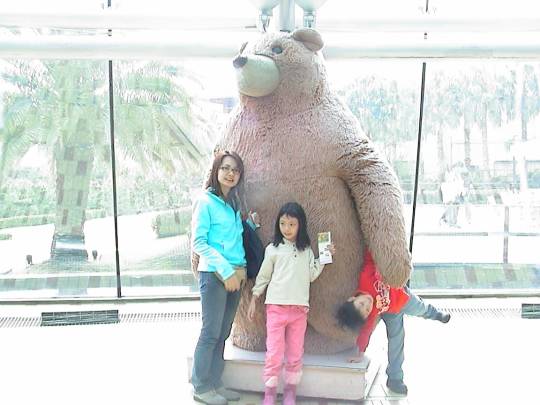
Cost: ₩10000 (₩ 8,800 if you book on Klook)
Opening Hours: 09:00-19:00 (last entry at 18:00)
Suggested Duration: 2 hours
Address: 31, Jungmungwangwang-ro110beon-gil, Seogwipo-si, Jeju-do 제주특별자치도 서귀포시 중문관광로110번길 31 (색달동)
Special Features: The museum has lockers near its entrance for smaller bags (small fee required). You can also store your larger luggage bags for free (ironically) behind the front desk.
(2) Chocolate Museum
The Chocolate Museum is a 10-minute walk from the Teddy Bear Museum. Many of the TripAdvisor reviews say that visiting this museum is a waste of time. I don’t disagree. However, we paired our visit with a macaron decorating class, which made it slightly more interesting.
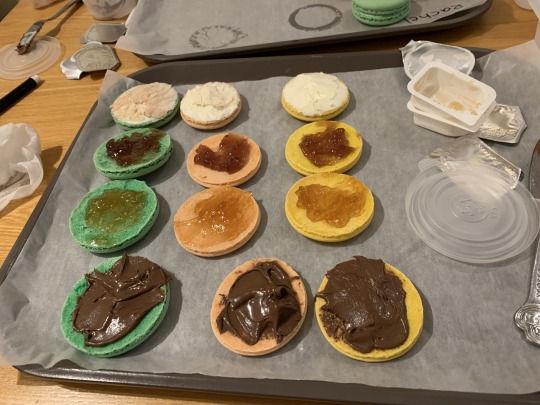
Cost: ₩12000 (includes costs for both entrance fee and macaron decorating class)
Opening Hours: 10:30-18:00
Suggested Duration: 10 minutes (touring the museum) + 1 hour (macaron decorating class)
Address: 551-18, Ilgwa-ri, Daejeong-eup, Seogwipo, Jeju Island 699-932, South Korea
(3) Other museums in Jungmun that we did not visit: Alive Museum, Play KPOP
Day 2: Hallasan and Seogwipo
Hiking Hallasan (한라산국립공원)
We travelled to Hallasan from Jungmun city by taxi. This costed us ₩23000. You can easily call a taxi using the Kakao Taxi App.
Possible Hiking Trials
(1) Yeongsil Trail: 5.8km
Yeongsil Rest Stop - Byeongpungbawi Rock - Uitse Oreum - Nambyeok Point
(2) Gwaneumsa Temple Trail: 8.7 km
Gwaneumsa Camping Site - Tamna Valley - Gaemideung - Samgakbong Peak Shelter - Summit (Dongneung)
(3) Seongpanak Trail: 9.6 km
Seongpanak Trail Information Center - Sokbat Shelter - Saraak Oreum Entrance - Azalea field - Summit (Dongneung)
(4) Donnaeko Trail: 7 km
Donnaeko Trail Information Center - Pyeonggue Shelter - Nambyeok Point
(5) Eoseungsaengak Trail: 1.3 km
Eorimok Trail Information Center - Eoseungsaengak
(6) Seokguram Trail: 1.5 km
Chunghon Memorial Site parking lot - Seokguram
The path we took was icy (we went in end November), but the views along the way were very pretty.
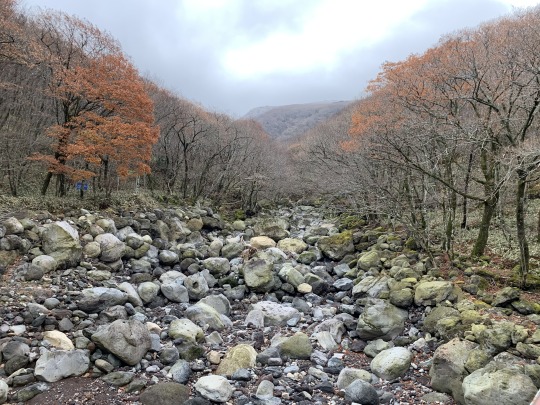
Cost: Free
Opening Hours: N/A
Address: 2070-61, 1100-ro, Jeju-si, Jeju-do 제주특별자치도 제주시 1100로 2070-61
Note: There are no bathrooms or shops during the course of the trial.
Dinner at Seogwipo Maeil Olleh Market
A taxi from Jungmun to the Seogwipo Maeil Olleh Market costed us ₩14800.
We tried an extensive array of street food at the Seogwipo Maeil Olleh Market, including tangerine mochi, crab sticks, beef cubes, spicy tteokbokki (rice cakes), cheesy squid pancakes peanut dumplings and peanut wine. Each item was priced at no more than ₩2000. Being someone who likes sweet desserts, my favourite was of course the tangerine mochi. The mochi not only was made of tangerine flavoured ice cream, but the ice cream also wrapped around an actual slice of tangerine.
Opening Hours: 07:00-21:00
Suggested Duration: 2.5 hours
Address: 22 Jungjeong-ro73beon-gil, Seogwi-dong, Seogwipo-si, Jeju-do, South Korea
Day 3: Seogwipo, West Coast of Jeju and Jeju City
We hired a private driver and car on HopeTrip to (i) take us from Seogwipo to Jeju City and (ii) tour the west coast of Jeju Island. The package we selected allowed us to be with our driver for 10 hours. We could tell our driver the places we wanted to visit as we went along. The price of hiring a private driver and car is relatively reasonable when split among 4 people. However, if you are travelling alone, a more cost-effective method of touring would be to join a group tour on Klook.
Horseback riding in Seogwipo
We started our morning with horseback riding at Jeju Land ATV & Horse Riding (제주랜드ATV&승마). The experience was pretty fun, but it lacked the “fear factor” element because the terrain was relatively flat and the route was fenced along its sides such that our horses could only go in one direction. Nevertheless, in exchange, the upside to this experience at Jeju Land was the high-level of safety it offered.

Cost: ₩50000 for 30 minutes
Opening Hours: 09:00-18:00 (last entry 17:00)
Address: 제주특별자치도 서귀포시 성산읍 서성일로 397
Tangerine picking in Seogwipo

Our driver recommended a tangerine picking place in Seogwipo. The tangerine farm was divided into two sides: sour tangerines and sweet tangerines. We were given gloves and clippers and could hand-pick our tangerines from the farm. There was no time limit, and we were allowed to eat as many tangerines as we wanted while we plucked them. At the end of the experience, we could each take home one bag of tangerines. There are also many photo spots near the entrance of the farm if you want to take Instagram pictures. 🍊
The price of this experience is very reasonable when compared to the price of tangerines we bought from the Seogwipo Maeil Olleh Market.
Cost: ₩6000
Osulloc Tea Museum
We travelled to the Osulloc Tea Museum by car. However, the museum is also accessible by public transport.
If you are heading here from Jeju city/Moseulpo, take Bus No.755 to OSULLOC station.
If you are heading here from Seogwipo city/Jungmun Tourist Complex, take Bus No.780, 961 to Dongkwang Yukkeori station. Transfer to bus No.755 and take the bus to OSULLOC station.
If you are heading here from Hallim, take Bus No. 967 to OSULLOC station.
At the Osulloc Cafe, we purchased a green tea dessert set. For ₩36000, we got (i) matcha cream cake, (ii) matcha ice cream, (iii) matcha smoothie and (iv) one tea pot of green tea. I am not usually a big fan of green tea and matcha flavoured products, but the green tea desserts at the Cafe were very tasty. The green tea cream cake in particular is very good!
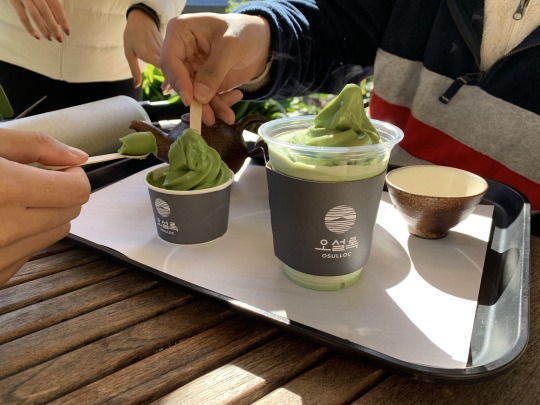
After enjoying matcha flavoured desserts at the cafe, head down to the green tea fields.
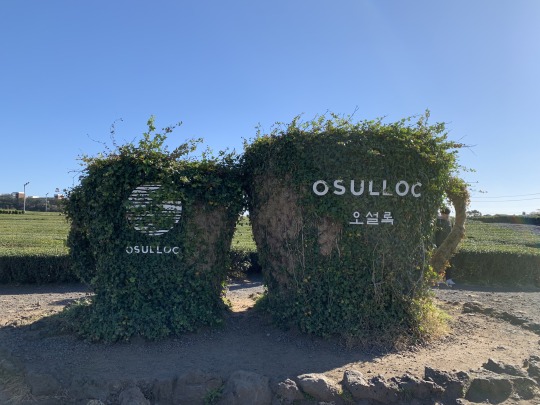
Cost: Free
Opening Hours: 09:00-18:00
Suggested Duration: 2 hours
Address: 15 Sinhwayeoksa-ro Andeok-myeon, Seogwipo city, Jeju-do
Hallim Park
Hallim Park has gardens that can be enjoyed in any season. Attractions include Palm Tree Road, Jeju Stone and Bonsai Garden, Water Garden, Subtropical Botanic Garden and many more. The most famous tourist sites in Hallim Park are the Hyeopjaegul and Ssangyonggul Caves. You can also check out the park’s folk village, where you will see sculptures of Jeju’s famous Dol hareubang.
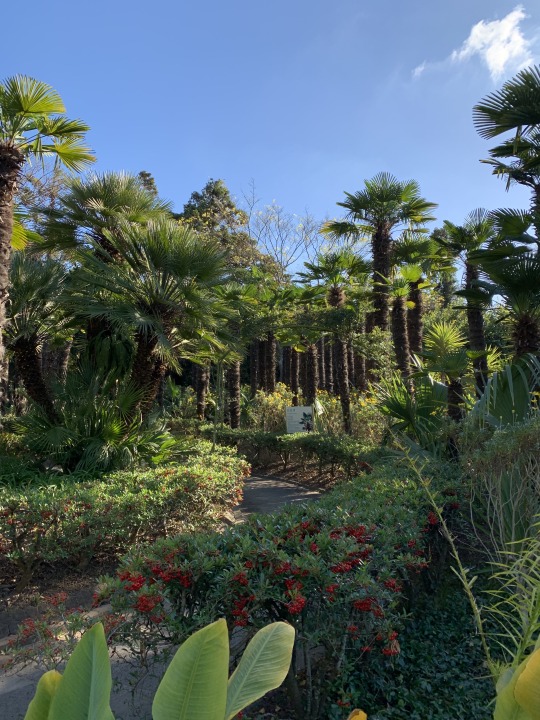
The Dol hareubang sculptures are carved from the island’s porous volcanic rock and are easily identifiable: they all have bulging, pupil-less eyes, with their hands resting atop their bellies, one slightly higher than the other. All the sculptures also wear mushroom-shaped hats.
We were told by our tour guide that touching different parts of the Dol hareubang will give you good luck in different areas of your lie. You can touch the sculpture’s eyes if you want twins, nose if you want a son and lips if you want a daughter. If you want to make more money, touch the belly.

The best part of visiting Hallim Park is, would nevertheless be seeing peacocks strolling around the park alongside you.
Cost: Adults ₩12000 / Teenagers ₩8000 / Children ₩7000 / Seniors ₩10000 won
Opening Hours: March-September 08:30-19:00; October-February 08:30-18:00; Summer peak season (July 15-August 20) 08:30-19:30
Suggested Duration: 3 hours
Address: 300, Hallim-ro, Hallim-eup, Jeju-si, Jeju-do 제주특별자치도 제주시 한림읍 한림로 300 (한림읍)
Love Land
I think the picture below speaks for itself.
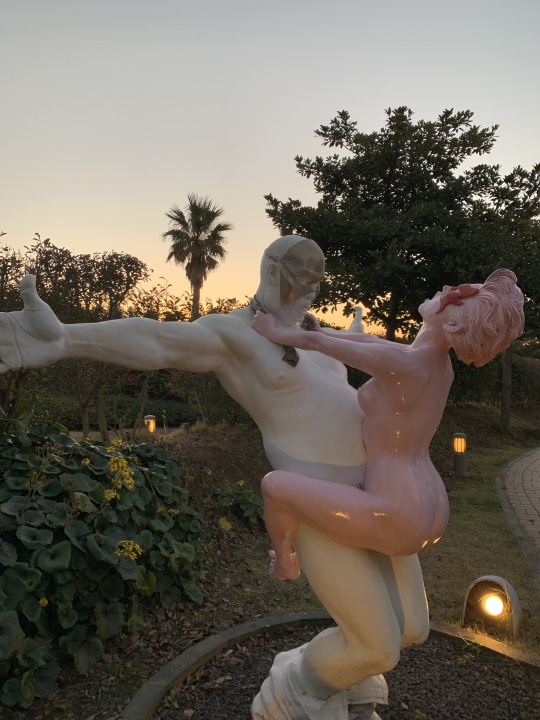
Cost: ₩12000
Opening Hours: 09:00-24:00 (last entry: 23:00)
Suggested Duration: 1.5 hours
Address: 2894-72, Cheonbaengi-ro, Jeju-si, Jeju-do 제주특별자치도 제주시 1100로 2894-72 (연동)
Note: Visitors must be 20 years of age or older
Shopping in Jeju City
We ended the night by shopping along Singwang-ro in Jeju City. In this area, you can find retail and makeup shops like Artbox, Innisfree and Nature Republic, which are perfect if you want to get a gift for the holiday season or simply buy a few packs of face masks home to add to your nightly skincare routine.
Day 4: East Coast of Jeju and Jeju City
We hired a private driver and car from KKday to take us around the East coast of Jeju Island. However, if you are traveling alone, check out this tour on Klook.
Gwangchigi Beach
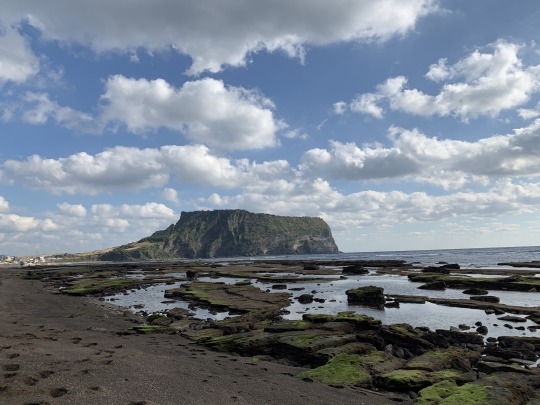
Suggested Duration: 15 minutes
Udo Island
I will share our itinerary for Udo Island in the third post of my Jeju series. Check out Udo Island’s delicacies in my Jeju Food Guide (second post of the series: click here).
Seongsan Ilchulbong Peak (Sunrise Peak, 성산일출봉)
The hike up and down will take you ~1 hour but the view from the top is worth it. This peak is not only one of Jeju’s most well-known attractions, but is also a UNESCO World Heritage site
On your way down, keep a lookout for Jeju’s Haenyeo 해녀 (female divers). You can catch the haenyeo perform at 13:30 and 15:30at the bottom of the crater. This community of women (mostly aged 60-80) gather shellfish for up to 7 hours daily, 90 days a year, to make a living. They can dive around 10m under the sea without oxygen masks. Before every dive, the Haenyeo make a prayer to the Jamsugut (goddess of the sea) to ask for safety and a good catch. The culture of Jeju Haenyeo was inscribed in 2016 on UNSECO’s Representative List of the Intangible Cultural Heritage of Humanity. For a more personal account of the stories of the Haenyeo, read https://roadsandkingdoms.com/2017/the-female-free-divers-of-jeju/.

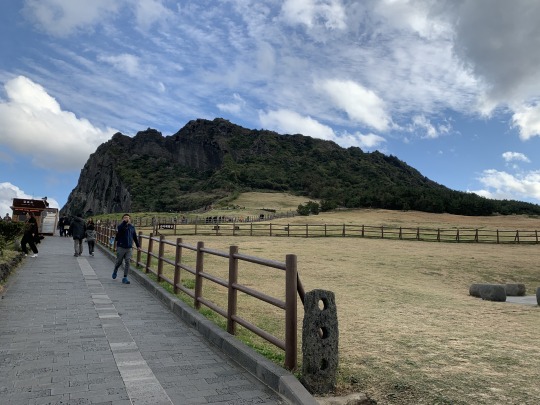
Cost: ₩2000
Notes: The trial is closed on the first Monday of each month
Day 5: Jeju City
Dongmun Traditional Market (제주동문시장,동문재래시장)
At Jeju’s oldest street market, you can explore Korean street food. We enjoyed banana mochi, live octopus and abalone! Check out my Jeju Food Guide for more details.

Opening Hours: 08:00-21:00
Suggested Duration: 1.5 hours
Address: 20 Gwandeong-ro 14(sipsa)-gil, Idoil-dong, Jeju-si, Jeju-do, South Korea
Yongduam Rock (용두암)
The Yongduam Rock looks like a Dragon Head and is a unique photo spot. The rock was created by strong winds and waves over thousands of years. Legend has it that a dragon stole jade from Hallasan and consequently, was shot down by the mountain deity. When the dragon fell, his body sank into the ocean but his head froze into rock.
Suggested Duration: 20 minutes
Address: Yongduam-gil, Jeju-si, Jeju-do 제주특별자치도 제주시 용두암길 (제주올레길17코스)
Notes: The Yongduam rock is near Jeju International Airport, so you can take a taxi directly to the airport after your visit this attraction.
0 notes
Text
Journal #3: Koreshan Historic State Park
I. The Art Hall
When first entering the park, the tour guide led us into a building that was considered the art hall. This building was the center to where the Koreshan’s held their religious ceremonies led by their founder, held college classes that pertained to the workings of the camp, and played music and showed art for the residents. The art hall displays the histories of the Koreshan’s, with their founder Dr. Cyrus R Teed, and his revelations.
Teed was adamant that G-d had told him the inner workings of our world. The universe was entrapped in the Earth, and that human beings would be immortal if they practiced celibacy. Women and men were held at the same standard, and their G-d was neither man nor woman. With this revelation, Teed decided to spread this message with creating a society of 10 million; only 200 joined. Teed gathered higher-class individuals, or individuals who were from rich beginnings and backgrounds, to join the commune (cult). These individuals agreed to give up all their worldly possessions, and live on a commune. On this commune, they developed a college that was considered “pioneer university,” and held public concerts with orchestrations. Those who donated land could also be a part of the commune, but not have to be celibate.
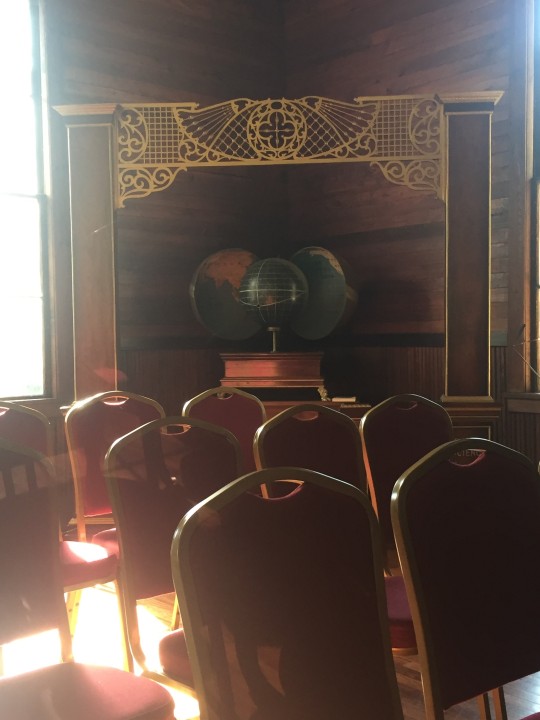
A representation of how the universe was entrapped inside the Earth.

How the commune would have finally looked if 10 million people had originally joined. The center would be in Estero, Florida, where the commune was located.
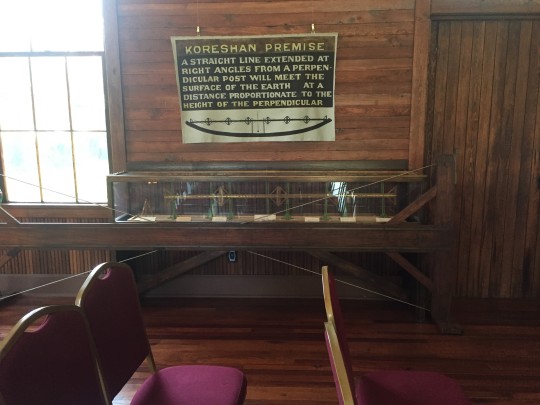
Teed’s “proof” that the universe was trapped inside the Earth. It was flawed, because it could be easily manipulated to help prove his theory/revelation.
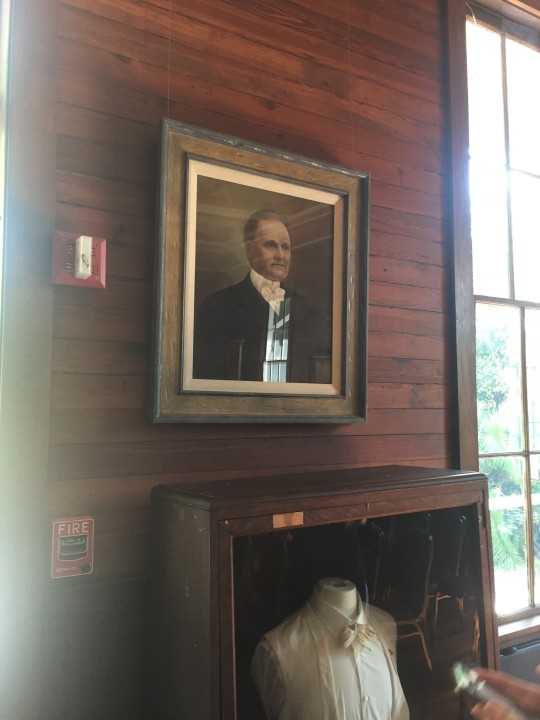
A photo of the leader of the Koreshan’s, Dr. Cyrus R. teed. After his death in 1908, the population of the commune declined rapidly; by 1956 only 5 members remained as identifying as a Koreshan.
II. General Store
Walking outside from the art hall and onto the main portion of the commune is the general store. This store was special, because it was the first sign that the Koreshan’s were sustainable. This store was the only store between Fort Myers and Naples at one point in time. All the food from the store was grown on the Koreshan land (that stretched 300 acres). They sold local fruits, bread baked on property, molasses, and even gin. The original general store was burned down in 1938, but a new one was created shortly after with wings that held workers.
The Koreshan’s realized that while they wanted to abstain from the use of money, they needed certain resources that they could not produce themselves. Anything that they could not make on their own, they would purchase from the income of their many business ventures. They had a concrete plant, made pots and flower erns, made own electricity and sold to neighbors( used until 1946 when FPL was developed), had lumber mills, publishing house, gas station, camp ground. They had lot of business because of their need for musical instruments in their public concerts and parts for generator they built themselves.

A window of the general store; tourists can read descriptions of what was being sold at this store.

A plaque placed outside of the general store for when it was rebuilt. It is now condemned due to water damage, so there are no pictures of the inside. :(
III. Bamboo Landing
This area was the docking area of the commune. They imported bamboo, which is actually a grass. After a while, the Koreshan’s realized that many individuals were using the canal and money could be generated. The Koreshan’s began to tax individuals, almost like a pay toll on a main highway, while they pass through their portion of the canal. The local residents did not take to this idea very well, and the tax was taken down.

Bamboo trees that resided on the Koreshan commune. This was next to the docking area for fishing boats, and for travel.
IV. Founder’s House
In the founder’s house the founder, Cyprus Teed, and his wife Victoria reside in the upstairs portion of the facility. After Cyprus’s death, the commune did not take to Victoria’s instruction (they never liked her) and she only lasted four months as the Koreshan leader. She eventually fled and married a dentist, forgetting about her past. Before Victoria left, they had a grand sitting/tea room, where they would house guests and show that they still maintained an extravagant culture. Along with the beautiful furnishings, we were able to see historic pictures of the members who resided in the commune. One by the left-hand side of the front door showed children who were introduced to Koreshan society; these children were not born into the society. Since this society believed in abstinence, no children were born and the population died because of this. All the children that resided in the commune were separated from their parents, in order to eradicate parental roles and make the commune more of a community. None of the children that were pictured below stayed in the commune until death.
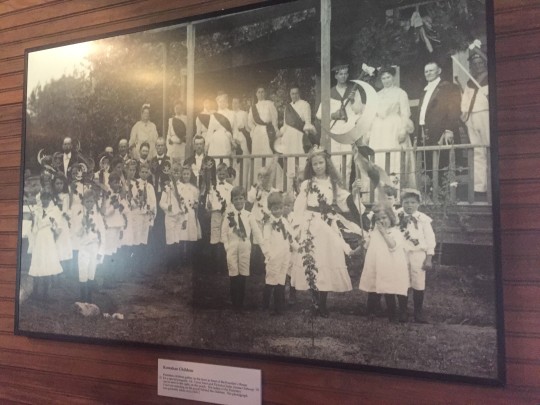
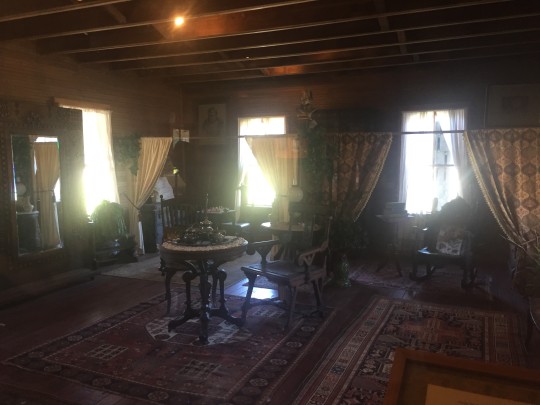
A recreation of the sitting room Cyrus and Victoria had in their home.
V. Planetary court
The planetary court was made up of 8 women who oversaw the operations of the Koreshan society. These women dealt with money, led trade deals, and sought for the welfare of the community. The home that these women resided in could have fit 20 indidviduals at a given time, only 8 women and a man who helped the women lived in the home. Outside of the home, a gutter was attached to collect rainwater for washing dishes/clothes; this is another example of how this society practiced sustainability.

An outside picture of the home for the planetary court. Rooms wrap around the entirety of the building.
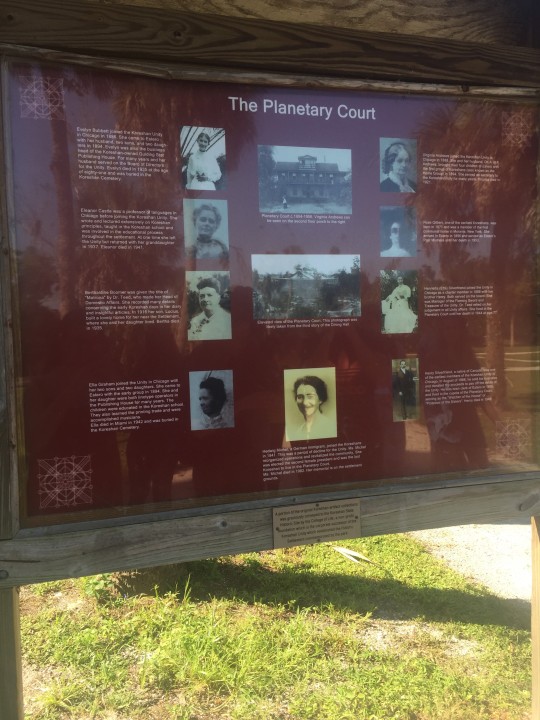
The women who make up the planetary court and the one man that helped with external endeavors for the women.
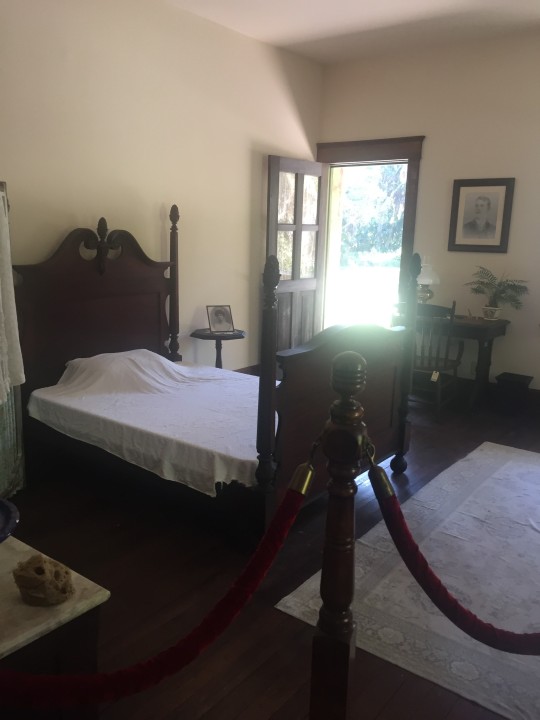
An example of a room a women would have when residing in the planetary court. The house was built with wood paneling, sculptured wood that was used in large sailing ships, and much more privacy than the men tended to have.
VI. Bakery/ Members cottages
The Bakery was used for the general store, and produced more bread than a navy ship would produce for its men (over 500 loaves of bread). They owned 2-3 huge scale ovens to bake their bread, and the individuals who worked the ovens did not ususally stay in beautiful corners.
The cottages where the individuals who did not remain abstinent, and men, would reside in a hut looking cottage that was in no way the level of luxury the women seemed to have in the planetary court. They were considered shotgun buildings, because just like the barrel of a shotgun you can look to forward and see straight to the back of the room.

An example of a member’s cottage. Usually 13+ individuals would reside in this cottage.

A further explanation of the cottage.
VII. Industrial area
Proof that the Koreshan’s could be considered sustainable was in their industrialized area. They had developed a laundry mechanism, that both men and women would operate, that would run on a motor and be helped with physical labor. They also developed a whole building to construction, even having drills that you would run from the gears that lay above your head.
A few steps away, a building holding a generator was held. The Koreshan’s learned how to generate electricity and become self-sufficient without the need for other members of external communities. Though there are no surviving members, volunteers will help get the generator running to this day.
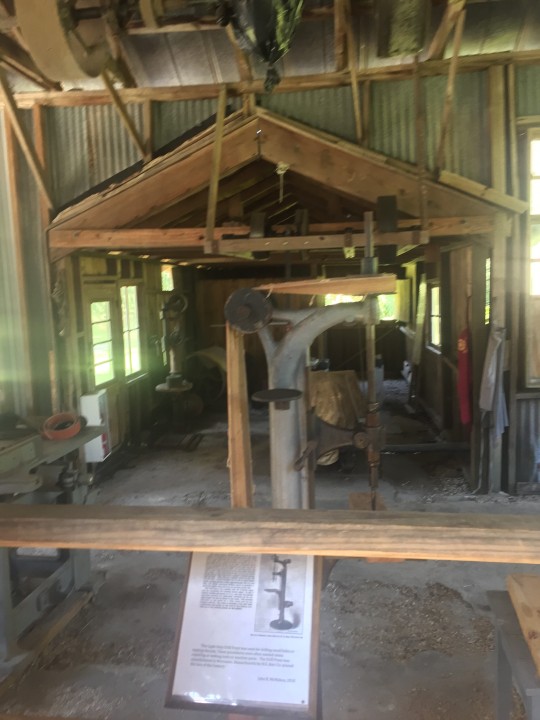
A drill that was used for construction, and was started up by the gears held above the drill.
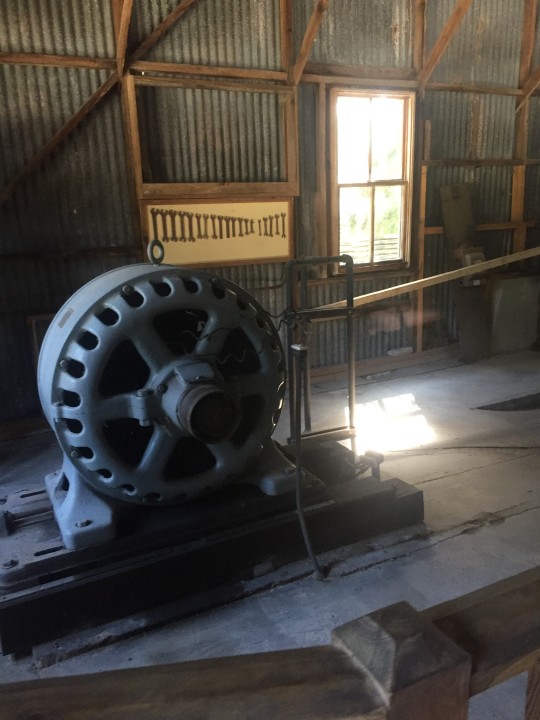
The original generator that the Koreshan’s used to generate electricity for their commune. They would run wires underneath the ground in order to not clutter the physical surroundings of the compound.

An old picture of the original generator.
0 notes
Text
21 Cool Things To Do in Pai, Thailand
Pai is a small town located in Northern Thailand and due to its charm and the many different things to do in Pai, it has become a popular place for travellers.
From visiting waterfalls and hiking the Pai Canyon, to checking out the Big Buddha and exploring by scooter, Pai offers numerous attractions for backpackers, travellers, expats and everyone in between.
For such a small place, the list of things to do in Pai is huge! This town is growing and so are the many activities available in Pai for travellers. This is definitely one of the best places to visit in Thailand.
The road between the northern city of Chiang Mai and Pai is an exciting adventure all on its own. In fact, this journey was the main reason I went to Pai in the first place.
But to my surprise, Pai was a town that stole my heart, and I would return to in a heartbeat. In fact, visiting Pai was one of my Southeast Asia highlights.
Here’s a list of the top 21 things to do in Pai you won’t want to miss!
1. Learn To Ride a Scooter
Learning to ride a scooter is first on my list of things to do in Pai for a reason — it’s basically an essential activity in this tiny town. Like me, if you have never ridden a motorbike or scooter before, Pai is the place to don a helmet and try.
Why is learning to drive a scooter essential? Well, many of the activities in Pai aren’t actually in the town center, but a couple of minutes drive out-of-town.
Because Pai is famous for tourists renting scooters as their main mode of transportation, there aren’t too many tuk-tuks in town. Plus, part of the charm of Pai is that there isn’t much traffic, making it a good place for newbies to learn.
That all being said, tourists walk around Pai like mummies, all bandaged up from scooter accidents. So much so, that you don’t even need to ask somebody “what happened” when you see their battered knee, it’s just assumed it was a scooter accident.
Make sure you wear a helmet, drive cautiously, and of course, don’t drink and drive.
Me, about to ride a scooter for the first time!
I rented a scooter for two full days while I was in Pai and it cost 500 Baht for both days for an automatic scooter, which was a great deal. It was a lot of fun learning how to ride, and was also a useful means of transport for getting around to the many things to do in Pai.
There are many different rental shops along the main walking street in Pai. You will have to leave a cash deposit that you will get back once you return the scooter in its original condition — don’t leave your passport, even if they ask.
You can purchase insurance for the scooter from these rental shops as well which may be a good idea if it is your first time riding a scooter!
If you want to do a longer trip, the Mae Hong Son Loop is Thailand’s most popular and stunning journey. Learn more about it here.
2. Wander the Night Markets (one of the best things to do in Pai in the evening)
Wondering what to do in Pai in the evenings? Every night there are markets in Pai along the walking street. For such a small town, these markets are quite impressive. Here, you can find everything from clothing to food, with the best cheap street food options being found at the night markets.
At the night markets, you will also be tempted by the shopping. There are souvenirs, herbal remedies, clothing, and more – basically anything you could think of, you’ll find!
But regardless of whether or not you want to buy something, the markets are always a lot of fun and are one of the free things to do in Pai.
See Also: Things To Do in Koh Lipe – 21 Things You Don’t Want To Miss
3. Climb to The Big White Buddha (Wat Phra That Mae Yen)
If you have been backpacking Thailand for a while, visiting another Buddha statue might not sound all that appealing, but this one is worth it simply for the view!
The steps to get to the top will have you working up a sweat, but the panoramic view from next to the Buddha is worth it. Make sure you also have a look at the blindingly white Buddha statue, it’s pretty impressive.
A visit to the Big Buddha is easy. You will see it from town so just drive in that direction and you will get there. Visiting the Big Buddha is free and will take you about an hour to walk to the top, enjoy the views and take pictures, and walk back down. Make sure you dress appropriately and bring some water with you.
4. Party at Sunset Bar
No trip to Pai would be complete without a visit to the Sunset Bar. The Sunset Bar is just as the name suggests, the place to go at sunset (and stay well after dark.)
The Sunset Bar is one of the most popular things to do in Pai amongst travellers as it’s situated just outside of the main town center, but still within walking distance (meaning you don’t have to drink and drive home).
The bar is up in the trees and offers a great view of the sunset each night. Cushions line the floor as seating and create a relaxed atmosphere for backpackers wanting to share some travel stories over a drink. Expect to pay around 100 Baht for a drink, but sometimes they do have 2 for 1 specials.
See Also: Cost Of Living in Thailand – A Guide For Travellers, Expats and Digital Nomads
5. Go Tubing on The Pai River
Tubing along the Pai river is one of the most popular things to do in Pai. It’s affordable, only takes about an hour, and is available most months of the year.
Unfortunately, when I was there, there had just been some heavy rainfall and the river was flowing so rapidly that it was unsafe for tubing.
Some people still tried to sell us the activity even though we were told by several others that the river was unsafe. Keep your wits about you and only tube when it’s safe to do so. The most common months for heavy rain in Pai are from May to October.
It costs between 200-300 Baht ($6 – $9) for a trip which includes your tube rental as well as drop-off and pick-up. The tubing journey lasts for about one hour. Tubing can be booked easily through your accommodation, through a travel agency, or simply with one of the guys walking around town trying to sell tubing tours.
☞ If you’re looking for more Thailand articles, make sure to check out our Things To Do in Koh Phangan article, and our Things To Do in Bangkok post. There are so many amazing places to visit in Thailand!
6. Whitewater Rafting (one of the more adventurous things to do in Pai)
In Pai, whitewater rafting combined with hiking is becoming a popular activity. A few different tour operators organize these kinds of trips and multi-day options are also available.
One of the most popular companies for this kind of trip is called Active Thailand, they can be contacted on their website. There are also lots of travel agency booking places in Pai which can help organize this trip for you.
Prices depend on the number of people you can get together for a trip, the length or the trip, and the type of accommodation you require.
For a two-day, 1 night trip with basic accommodation (sleeping in a jungle camp on bamboo with mosquito nets) expect to pay about 3,500Baht or 100 USD. For the outdoor adventurer, this would be one of the best things to do in Pai.
7. Walk the WWII (Memorial) Bridge
The WWII Bridge was built by the Japanese back in 1942. The bridge was used to transport weapons and supplies to Myanmar during WWII. Out of all the places to see in Pai, this bridge has the most historical significance.
But besides its history, it’s also just a nice place to go for a walk. The bridge crosses a gorgeous river making for some good photo opportunities. Going to the WWII Bridge is free, but keep in mind that it is a popular tourist hotspot so it can be very busy.
8. Eat Healthy Food
Unless your Southeast Asia trip has included Canggu Bali, you are probably craving a good salad complete with avocado! There are several different places in Pai where you can get that healthy food fix.
A café called Earth Tone is a very popular restaurant serving high-quality vegetarian food. They have amazing waffles with fruit, sandwiches, salads, smoothies and more. Earth Tone is just one of the many places to eat healthy while in Pai. In fact, you’ll find vegetarian and gluten-free options in cafes all over town.
9. Eat Street Food
While the healthy options are great in Pai, the unhealthy street food options are just as good! When the sun starts going down many different little street food stands open up and cheap food takes over the bustling daytime café scene.
Like anywhere in Thailand, Pad Thai and various other noodle dishes are available for only a few baht. But in Pai, the locals are a little more creative with their street food, with stalls selling donuts and Indian food! Western food options like pizza and hamburgers are also readily available as well.
However, since one of the best things to do in Thailand is to eat Thai food, it’s recommended that you sample the local eats, you won’t be disappointed.
10. Practice Yoga
Pai is a perfect little town for yoga lovers. There are few different yoga retreats around, but there are also places in Pai where visitors can just drop in for a class or two.
The Famous Pai Circus Hostel offers yoga classes most morning at 9:30 am. The Swadasee Pai Resort also offers yoga classes most mornings. I recommend asking at your hostel or hotel when you arrive about current yoga classes in the area, as the class times and locations can change.
See Also: Things To Do in Koh Tao – Top 21 Things For Travellers
11. Hike the Pai Canyon
In my opinion, out of all of the things to do in Pai, hiking the Pai Canyon is the best! The Pai Canyon is a beautiful canyon with various hiking trails and lookouts over the countryside.
You will need a scooter or tuk-tuk to get out to the Pai Canyon as it is a few minutes drive out of town. Once you’re there, you’ll enjoy walking along the canyon ridges and being out in nature.
It’s really a beautiful place to visit. Many people explore the Pai Canyon at sunset for even more spectacular views. Entrance to the Pai Canyon is completely free. Just make sure you wear good walking shoes and bring plenty of water.
12. Have a “ Love Strawberry” Milkshake
The Love Strawberry farm and store is a fun stop on the way back into town from the Pai Canyon. It is a bit of a tourist trap, but that doesn’t mean it isn’t worth visiting!
When I was there I had a strawberry milkshake which was delicious. Exploring the property and taking some pictures are definitely some of the most touristy things to do in Pai.
13. Visit Tham Lod Cave
The Tham Lod Cave is huge (more than 1,600m long and 50m high), with a visit here being one of the most common things to do in Pai – but for good reason. Due to its sheer size, this cave is known as one of the most impressive in Thailand.
Inside you’ll find many limestone stalactite and stalagmite formations hanging from above (and some bats!), and since the Lang River flows through this cave, a portion of the cave is only accessible by bamboo boat. Because of this, a guide is mandatory in order to enter.
From Pai, it’s possible to visit Tham Lod Cave on a tour or to go on your own with a scooter. Either way, the drive takes about 45 minutes. Expect to pay about 600 Baht ($18) for a full-day tour from Pai including the guide once at Tham Lod Cave.
If you want to go independently, you will still have to pay for a guide once at the cave. The price depends on your group size but expect to pay about 200 Baht ($6) per person for the cave guide. Tham Lod Cave is one of the top places to visit in Pai, don’t miss it!
14. Sai Ngam Hot Springs
The Sai Ngam Hot Springs is also known as the “Secret” Hot Springs as they are a little outside of town and less developed than some of the other hot springs around Pai. But honestly, they are no secret and can be quite busy!
These hot springs are right in the jungle making them feel tranquil and a perfect place to relax away from the hustle and bustle of Pai.
The beautiful natural surroundings of the Sai Ngam Hot Springs combined with the low cost makes them one of the top things to do in Pai for both locals and tourists.
Sai Ngam Hot Springs are easily reached by scooter only 30 minutes from Pai. They are along the same road that leads to Tham Lom Cave so both of these activities could be done in one day. The entrance fee is 20 Baht ($0.60).
15. Explore the Santichon Village
Santichon Village is a small Yunnan cultural center about 5km outside of Pai, reached with a fun (very windy) road. This village was settled by the Chinese who fled the revolution of Mao Tse Tung, and after all these years, descendants of these settlers still live here making it an interesting place to visit.
There are a couple of different things to do at Santichon Village. The first would be to wander around and check out the clay houses and eat some of the traditional Yunnanese cuisine. Fried shiitake mushrooms and steamed black chicken are just a couple of the popular dishes.
Walking around the village you will see beautiful buildings in typical Yunnan style, and some fish ponds as well. It’s possible to buy fish food and feed the hundreds of koi fish, which is surprisingly a lot more entertaining than I expected it to be. Santichon Village is completely free to enter.
16. Ride the Human Powered Ferris Wheel
At the Santichon Village, there is a human-powered Ferris Wheel. We couldn’t get it going ourselves but then a local came and helped us out. While it seems a little dangerous it was a lot of fun! We probably spent a lot longer than we should’ve playing on the children’s toy.
17. Yun Lai Viewpoint
Just past the Santichon Village is the Yun Lai Viewpoint. It is accessible only by a very bumpy road. Once there, it costs 20 Baht to enter and then you will have a view overlooking Pai. This is one of the best places to visit in Pai for sunrise.
18. Go Piranha Fishing
This is one of the most unusual things to do in Pai. At the Piranha Fishing Park, there is a series of man-made lakes for fishing. You pay for a select amount of time and the workers will show you how to fish for the piranhas.
You are given a fishing rod as well as bread and a net. I was having some trouble at the beginning but the workers were super helpful and taught me the tricks. We only managed to catch one small piranha during our time there but some other people manage to catch some huge ones.
This is purely a recreational activity and all of the piranhas are released back into the lake once they are caught. They only use barbless hooks.
Prices depend on the season and length of time you want to go fishing but expect to pay around 200 Baht for three hours worth of fishing including some bait.
19. Swim at Mor Paeng Waterfall
Only 7km outside of Pai is the three-tiered Mor Paeng waterfall. While there are many waterfalls near Pai, Mor Paeng is one of the most popular due to its easy access, and because of how fun it is to swim and slide there!
Mor Paeng is best reached by motorbike along the same road as the Santichon Village and the piranha fishing. It’s a free activity but the local kids will want a small tip if they help you climb the waterfall and slide down.
There is a small area here for parking your bike, and from the car park it’s about a 200m walk through the jungle to get to the waterfall. If you’re looking for something to cool you off, visiting this waterfall is one of the best things to do in Pai.
20. Drink Mojitos
I personally loved the mojitos in Pai! One afternoon, some friends and I walked the streets of Pai in search of some good “happy hour” deals. What we found was that happy hour existed everywhere, but not for just one hour, for most of the day – and often featured Mojitos.
I simply couldn’t turn down 2 for 1 Mojitos and needless to say I had a great evening full of rum and sugar!
Pai is a very social place for travellers. The atmosphere in pubs and restaurants is friendly and inviting, and I’m almost certain that you will make many friends over a mojito in Pai.
21. Drive to Chiang Mai
There are many fun things to do in Chiang Mai as well, so once you’ve checked out Pai, make your way there. The road between Chiang Mai and Pai is famous for being very scenic, but also for making people very car sick!
Before we left Chiang Mai for Pai, other travellers cautioned us about the many turns and how everyone pretty much is guaranteed to get at least a little motion sick.
Regardless of how uncomfortable the ride might be, it is truly beautiful! I would recommend renting a motorbike and driving yourself in order to stop as frequently as you want.
However, if you are not an experienced rider then don’t do this as it is a road in which locals drive very fast and the many sharp turns could be a problem.
If you don’t want to drive a motorbike there yourself, you could hire a driver to take you, or simply just catch a bus. While the buses are not comfortable and don’t stop often, it is still a fun ride and gets you from point A to B. The drive takes approximately 3 hours without stopping.
See Also: Things To Do in Chiang Rai – A List Of The Best
Now You Know What To Do in Pai!
Based on this list of things to do in Pai, you can probably tell that it isn’t your typical town in Thailand. There are no beaches, island parties, or streets fully dedicated to night-clubbing, but this is what makes Pai a unique place to visit.
With that being said, it is still a charming town where tourists feel comfortable, making it a popular place for backpackers to visit while in Thailand. I hope this list gave you some ideas for things to do during your trip to Pai. Happy travels!
Images in this post are courtesy of Shutterstock. Learn more about their royalty-free images here.
Goats On The Road Recommended Resources
For Pai, Thailand
✓ There are so many adventurous things to do in Pai. It’s important to make sure you have adequate travel insurance before embarking on any trip, but especially one where you’ll be partaking in outdoor activities such as snorkelling, diving, kayaking, hiking, etc. World Nomads covers almost all adventurous activities that you can think of. Click here to get a free quote and learn more about this popular travel insurance.
✓ We recommend purchasing eco-friendly products for your stay in Pai. We’re personally trying to reduce the amount of single-use plastic that we use, and encourage you to do the same during your travels.
To avoid purchasing plastic water bottles while in Pai, consider buying a water bottle with a built-in filter such as LifeStraw or GrayL, or get yourself a Steri-Pen. In terms of utensils, this bamboo set is great for picnics, while these glass or metal straws are perfect for cocktails, fruit juices or a glass of water. Say no to straws and plastic utensils, bring your own.
✓ There are numerous affordable places to stay in Pai. Goats On The Road uses and recommends Booking.com due to their excellent prices and cancellation options. We also frequently use Airbnb when we want to book a short-term apartment. Click here to search for accommodation in Pai on Booking.com, and click here to sign up with Airbnb (you’ll receive a free $35 credit!).
Top Hotels, Hostels & B&B’s in Pai
Budget:
Pai Porpeang Guesthouse – rated “Wonderful” 9/10. The cute bungalows here offer guests a private balcony, ensuite bathroom and shower, and lovely garden views. Shops, restaurants and bars are all within a few minutes walk from here. Bungalows go from $12/night. Click here to learn more and book.
Hommy Camping Room – rated “Wonderful” 9/10. If you’re into camping…indoors…, then this is the place in Pai for you. Here, tents are set up in a room so you can share with friends, but still enjoy your privacy. Some rooms offer air-conditioning while others are fans only. There’s areas for chilling out and breakfast and coffee are served here. Tents for two people go from $8/night. Click here to learn more and to book.
Midrange:
Le Mont Resort – rated “Exceptional” 9.5/10. This tropical property offers guests accommodation in wooden bungalows, complete with private balcony and mountain scenery. There’s air-conditioning, hot water showers and a minibar inside each bungalow. If you’re looking for comfort and affordability, this is a good option. Bungalows here are from $30/night. Click here to learn more and to book.
Tarnjedton Pai Resort – rated “Exceptional” 9.6/10. The beautiful cottages here are set in the mountains, offering a peaceful stay for visitors. Rooms include a fan, ensuite bathroom, private balcony, TV and fridge. Breakfast is included in the room rate, which starts at $39/night. Click here to learn more and to book.
Top End:
Pai Village Boutique Resort & Farm – rated “Wonderful” 9.1/10. The property here is stunning! Set along the banks of the Pai River, the wooden cottages offer guests views of the mountains or garden from the private balconies. The ensuite bathrooms have hot water showers, and the rooms have sitting areas and kettles for guest’s use as well. You’ll have access to the property’s private farm which is 5 kilometers away, and after a day of enjoying all the things to do in Pai, you can relax with a massage. There’s also an onsite restaurant. Breakfast is included in the room rate, which starts at $85/night. Click here to learn more and to book.
Like This Article? Pin it!
The post 21 Cool Things To Do in Pai, Thailand appeared first on Goats On The Road.
21 Cool Things To Do in Pai, Thailand published first on https://travelaspire.weebly.com/
0 notes
Text
21 Cool Things To Do in Pai, Thailand
Pai is a small town located in Northern Thailand and due to its charm and the many different things to do in Pai, it has become a popular place for travellers.
From visiting waterfalls and hiking the Pai Canyon, to checking out the Big Buddha and exploring by scooter, Pai offers numerous attractions for backpackers, travellers, expats and everyone in between.
For such a small place, the list of things to do in Pai is huge! This town is growing and so are the many activities available in Pai for travellers. This is definitely one of the best places to visit in Thailand.
The road between the northern city of Chiang Mai and Pai is an exciting adventure all on its own. In fact, this journey was the main reason I went to Pai in the first place.
But to my surprise, Pai was a town that stole my heart, and I would return to in a heartbeat. In fact, visiting Pai was one of my Southeast Asia highlights.
Here’s a list of the top 21 things to do in Pai you won’t want to miss!
1. Learn To Ride a Scooter
Learning to ride a scooter is first on my list of things to do in Pai for a reason — it’s basically an essential activity in this tiny town. Like me, if you have never ridden a motorbike or scooter before, Pai is the place to don a helmet and try.
Why is learning to drive a scooter essential? Well, many of the activities in Pai aren’t actually in the town center, but a couple of minutes drive out-of-town.
Because Pai is famous for tourists renting scooters as their main mode of transportation, there aren’t too many tuk-tuks in town. Plus, part of the charm of Pai is that there isn’t much traffic, making it a good place for newbies to learn.
That all being said, tourists walk around Pai like mummies, all bandaged up from scooter accidents. So much so, that you don’t even need to ask somebody “what happened” when you see their battered knee, it’s just assumed it was a scooter accident.
Make sure you wear a helmet, drive cautiously, and of course, don’t drink and drive.
Me, about to ride a scooter for the first time!
I rented a scooter for two full days while I was in Pai and it cost 500 Baht for both days for an automatic scooter, which was a great deal. It was a lot of fun learning how to ride, and was also a useful means of transport for getting around to the many things to do in Pai.
There are many different rental shops along the main walking street in Pai. You will have to leave a cash deposit that you will get back once you return the scooter in its original condition — don’t leave your passport, even if they ask.
You can purchase insurance for the scooter from these rental shops as well which may be a good idea if it is your first time riding a scooter!
If you want to do a longer trip, the Mae Hong Son Loop is Thailand’s most popular and stunning journey. Learn more about it here.
2. Wander the Night Markets (one of the best things to do in Pai in the evening)
Wondering what to do in Pai in the evenings? Every night there are markets in Pai along the walking street. For such a small town, these markets are quite impressive. Here, you can find everything from clothing to food, with the best cheap street food options being found at the night markets.
At the night markets, you will also be tempted by the shopping. There are souvenirs, herbal remedies, clothing, and more – basically anything you could think of, you’ll find!
But regardless of whether or not you want to buy something, the markets are always a lot of fun and are one of the free things to do in Pai.
See Also: Things To Do in Koh Lipe – 21 Things You Don’t Want To Miss
3. Climb to The Big White Buddha (Wat Phra That Mae Yen)
If you have been backpacking Thailand for a while, visiting another Buddha statue might not sound all that appealing, but this one is worth it simply for the view!
The steps to get to the top will have you working up a sweat, but the panoramic view from next to the Buddha is worth it. Make sure you also have a look at the blindingly white Buddha statue, it’s pretty impressive.
A visit to the Big Buddha is easy. You will see it from town so just drive in that direction and you will get there. Visiting the Big Buddha is free and will take you about an hour to walk to the top, enjoy the views and take pictures, and walk back down. Make sure you dress appropriately and bring some water with you.
4. Party at Sunset Bar
No trip to Pai would be complete without a visit to the Sunset Bar. The Sunset Bar is just as the name suggests, the place to go at sunset (and stay well after dark.)
The Sunset Bar is one of the most popular things to do in Pai amongst travellers as it’s situated just outside of the main town center, but still within walking distance (meaning you don’t have to drink and drive home).
The bar is up in the trees and offers a great view of the sunset each night. Cushions line the floor as seating and create a relaxed atmosphere for backpackers wanting to share some travel stories over a drink. Expect to pay around 100 Baht for a drink, but sometimes they do have 2 for 1 specials.
See Also: Cost Of Living in Thailand – A Guide For Travellers, Expats and Digital Nomads
5. Go Tubing on The Pai River
Tubing along the Pai river is one of the most popular things to do in Pai. It’s affordable, only takes about an hour, and is available most months of the year.
Unfortunately, when I was there, there had just been some heavy rainfall and the river was flowing so rapidly that it was unsafe for tubing.
Some people still tried to sell us the activity even though we were told by several others that the river was unsafe. Keep your wits about you and only tube when it’s safe to do so. The most common months for heavy rain in Pai are from May to October.
It costs between 200-300 Baht ($6 – $9) for a trip which includes your tube rental as well as drop-off and pick-up. The tubing journey lasts for about one hour. Tubing can be booked easily through your accommodation, through a travel agency, or simply with one of the guys walking around town trying to sell tubing tours.
☞ If you’re looking for more Thailand articles, make sure to check out our Things To Do in Koh Phangan article, and our Things To Do in Bangkok post. There are so many amazing places to visit in Thailand!
6. Whitewater Rafting (one of the more adventurous things to do in Pai)
In Pai, whitewater rafting combined with hiking is becoming a popular activity. A few different tour operators organize these kinds of trips and multi-day options are also available.
One of the most popular companies for this kind of trip is called Active Thailand, they can be contacted on their website. There are also lots of travel agency booking places in Pai which can help organize this trip for you.
Prices depend on the number of people you can get together for a trip, the length or the trip, and the type of accommodation you require.
For a two-day, 1 night trip with basic accommodation (sleeping in a jungle camp on bamboo with mosquito nets) expect to pay about 3,500Baht or 100 USD. For the outdoor adventurer, this would be one of the best things to do in Pai.
7. Walk the WWII (Memorial) Bridge
The WWII Bridge was built by the Japanese back in 1942. The bridge was used to transport weapons and supplies to Myanmar during WWII. Out of all the places to see in Pai, this bridge has the most historical significance.
But besides its history, it’s also just a nice place to go for a walk. The bridge crosses a gorgeous river making for some good photo opportunities. Going to the WWII Bridge is free, but keep in mind that it is a popular tourist hotspot so it can be very busy.
8. Eat Healthy Food
Unless your Southeast Asia trip has included Canggu Bali, you are probably craving a good salad complete with avocado! There are several different places in Pai where you can get that healthy food fix.
A café called Earth Tone is a very popular restaurant serving high-quality vegetarian food. They have amazing waffles with fruit, sandwiches, salads, smoothies and more. Earth Tone is just one of the many places to eat healthy while in Pai. In fact, you’ll find vegetarian and gluten-free options in cafes all over town.
9. Eat Street Food
While the healthy options are great in Pai, the unhealthy street food options are just as good! When the sun starts going down many different little street food stands open up and cheap food takes over the bustling daytime café scene.
Like anywhere in Thailand, Pad Thai and various other noodle dishes are available for only a few baht. But in Pai, the locals are a little more creative with their street food, with stalls selling donuts and Indian food! Western food options like pizza and hamburgers are also readily available as well.
However, since one of the best things to do in Thailand is to eat Thai food, it’s recommended that you sample the local eats, you won’t be disappointed.
10. Practice Yoga
Pai is a perfect little town for yoga lovers. There are few different yoga retreats around, but there are also places in Pai where visitors can just drop in for a class or two.
The Famous Pai Circus Hostel offers yoga classes most morning at 9:30 am. The Swadasee Pai Resort also offers yoga classes most mornings. I recommend asking at your hostel or hotel when you arrive about current yoga classes in the area, as the class times and locations can change.
See Also: Things To Do in Koh Tao – Top 21 Things For Travellers
11. Hike the Pai Canyon
In my opinion, out of all of the things to do in Pai, hiking the Pai Canyon is the best! The Pai Canyon is a beautiful canyon with various hiking trails and lookouts over the countryside.
You will need a scooter or tuk-tuk to get out to the Pai Canyon as it is a few minutes drive out of town. Once you’re there, you’ll enjoy walking along the canyon ridges and being out in nature.
It’s really a beautiful place to visit. Many people explore the Pai Canyon at sunset for even more spectacular views. Entrance to the Pai Canyon is completely free. Just make sure you wear good walking shoes and bring plenty of water.
12. Have a “ Love Strawberry” Milkshake
The Love Strawberry farm and store is a fun stop on the way back into town from the Pai Canyon. It is a bit of a tourist trap, but that doesn’t mean it isn’t worth visiting!
When I was there I had a strawberry milkshake which was delicious. Exploring the property and taking some pictures are definitely some of the most touristy things to do in Pai.
13. Visit Tham Lod Cave
The Tham Lod Cave is huge (more than 1,600m long and 50m high), with a visit here being one of the most common things to do in Pai – but for good reason. Due to its sheer size, this cave is known as one of the most impressive in Thailand.
Inside you’ll find many limestone stalactite and stalagmite formations hanging from above (and some bats!), and since the Lang River flows through this cave, a portion of the cave is only accessible by bamboo boat. Because of this, a guide is mandatory in order to enter.
From Pai, it’s possible to visit Tham Lod Cave on a tour or to go on your own with a scooter. Either way, the drive takes about 45 minutes. Expect to pay about 600 Baht ($18) for a full-day tour from Pai including the guide once at Tham Lod Cave.
If you want to go independently, you will still have to pay for a guide once at the cave. The price depends on your group size but expect to pay about 200 Baht ($6) per person for the cave guide. Tham Lod Cave is one of the top places to visit in Pai, don’t miss it!
14. Sai Ngam Hot Springs
The Sai Ngam Hot Springs is also known as the “Secret” Hot Springs as they are a little outside of town and less developed than some of the other hot springs around Pai. But honestly, they are no secret and can be quite busy!
These hot springs are right in the jungle making them feel tranquil and a perfect place to relax away from the hustle and bustle of Pai.
The beautiful natural surroundings of the Sai Ngam Hot Springs combined with the low cost makes them one of the top things to do in Pai for both locals and tourists.
Sai Ngam Hot Springs are easily reached by scooter only 30 minutes from Pai. They are along the same road that leads to Tham Lom Cave so both of these activities could be done in one day. The entrance fee is 20 Baht ($0.60).
15. Explore the Santichon Village
Santichon Village is a small Yunnan cultural center about 5km outside of Pai, reached with a fun (very windy) road. This village was settled by the Chinese who fled the revolution of Mao Tse Tung, and after all these years, descendants of these settlers still live here making it an interesting place to visit.
There are a couple of different things to do at Santichon Village. The first would be to wander around and check out the clay houses and eat some of the traditional Yunnanese cuisine. Fried shiitake mushrooms and steamed black chicken are just a couple of the popular dishes.
Walking around the village you will see beautiful buildings in typical Yunnan style, and some fish ponds as well. It’s possible to buy fish food and feed the hundreds of koi fish, which is surprisingly a lot more entertaining than I expected it to be. Santichon Village is completely free to enter.
16. Ride the Human Powered Ferris Wheel
At the Santichon Village, there is a human-powered Ferris Wheel. We couldn’t get it going ourselves but then a local came and helped us out. While it seems a little dangerous it was a lot of fun! We probably spent a lot longer than we should’ve playing on the children’s toy.
17. Yun Lai Viewpoint
Just past the Santichon Village is the Yun Lai Viewpoint. It is accessible only by a very bumpy road. Once there, it costs 20 Baht to enter and then you will have a view overlooking Pai. This is one of the best places to visit in Pai for sunrise.
18. Go Piranha Fishing
This is one of the most unusual things to do in Pai. At the Piranha Fishing Park, there is a series of man-made lakes for fishing. You pay for a select amount of time and the workers will show you how to fish for the piranhas.
You are given a fishing rod as well as bread and a net. I was having some trouble at the beginning but the workers were super helpful and taught me the tricks. We only managed to catch one small piranha during our time there but some other people manage to catch some huge ones.
This is purely a recreational activity and all of the piranhas are released back into the lake once they are caught. They only use barbless hooks.
Prices depend on the season and length of time you want to go fishing but expect to pay around 200 Baht for three hours worth of fishing including some bait.
19. Swim at Mor Paeng Waterfall
Only 7km outside of Pai is the three-tiered Mor Paeng waterfall. While there are many waterfalls near Pai, Mor Paeng is one of the most popular due to its easy access, and because of how fun it is to swim and slide there!
Mor Paeng is best reached by motorbike along the same road as the Santichon Village and the piranha fishing. It’s a free activity but the local kids will want a small tip if they help you climb the waterfall and slide down.
There is a small area here for parking your bike, and from the car park it’s about a 200m walk through the jungle to get to the waterfall. If you’re looking for something to cool you off, visiting this waterfall is one of the best things to do in Pai.
20. Drink Mojitos
I personally loved the mojitos in Pai! One afternoon, some friends and I walked the streets of Pai in search of some good “happy hour” deals. What we found was that happy hour existed everywhere, but not for just one hour, for most of the day – and often featured Mojitos.
I simply couldn’t turn down 2 for 1 Mojitos and needless to say I had a great evening full of rum and sugar!
Pai is a very social place for travellers. The atmosphere in pubs and restaurants is friendly and inviting, and I’m almost certain that you will make many friends over a mojito in Pai.
21. Drive to Chiang Mai
There are many fun things to do in Chiang Mai as well, so once you’ve checked out Pai, make your way there. The road between Chiang Mai and Pai is famous for being very scenic, but also for making people very car sick!
Before we left Chiang Mai for Pai, other travellers cautioned us about the many turns and how everyone pretty much is guaranteed to get at least a little motion sick.
Regardless of how uncomfortable the ride might be, it is truly beautiful! I would recommend renting a motorbike and driving yourself in order to stop as frequently as you want.
However, if you are not an experienced rider then don’t do this as it is a road in which locals drive very fast and the many sharp turns could be a problem.
If you don’t want to drive a motorbike there yourself, you could hire a driver to take you, or simply just catch a bus. While the buses are not comfortable and don’t stop often, it is still a fun ride and gets you from point A to B. The drive takes approximately 3 hours without stopping.
See Also: Things To Do in Chiang Rai – A List Of The Best
Now You Know What To Do in Pai!
Based on this list of things to do in Pai, you can probably tell that it isn’t your typical town in Thailand. There are no beaches, island parties, or streets fully dedicated to night-clubbing, but this is what makes Pai a unique place to visit.
With that being said, it is still a charming town where tourists feel comfortable, making it a popular place for backpackers to visit while in Thailand. I hope this list gave you some ideas for things to do during your trip to Pai. Happy travels!
Images in this post are courtesy of Shutterstock. Learn more about their royalty-free images here.
Goats On The Road Recommended Resources
For Pai, Thailand
✓ There are so many adventurous things to do in Pai. It’s important to make sure you have adequate travel insurance before embarking on any trip, but especially one where you’ll be partaking in outdoor activities such as snorkelling, diving, kayaking, hiking, etc. World Nomads covers almost all adventurous activities that you can think of. Click here to get a free quote and learn more about this popular travel insurance.
✓ We recommend purchasing eco-friendly products for your stay in Pai. We’re personally trying to reduce the amount of single-use plastic that we use, and encourage you to do the same during your travels.
To avoid purchasing plastic water bottles while in Pai, consider buying a water bottle with a built-in filter such as LifeStraw or GrayL, or get yourself a Steri-Pen. In terms of utensils, this bamboo set is great for picnics, while these glass or metal straws are perfect for cocktails, fruit juices or a glass of water. Say no to straws and plastic utensils, bring your own.
✓ There are numerous affordable places to stay in Pai. Goats On The Road uses and recommends Booking.com due to their excellent prices and cancellation options. We also frequently use Airbnb when we want to book a short-term apartment. Click here to search for accommodation in Pai on Booking.com, and click here to sign up with Airbnb (you’ll receive a free $35 credit!).
Top Hotels, Hostels & B&B’s in Pai
Budget:
Pai Porpeang Guesthouse – rated “Wonderful” 9/10. The cute bungalows here offer guests a private balcony, ensuite bathroom and shower, and lovely garden views. Shops, restaurants and bars are all within a few minutes walk from here. Bungalows go from $12/night. Click here to learn more and book.
Hommy Camping Room – rated “Wonderful” 9/10. If you’re into camping…indoors…, then this is the place in Pai for you. Here, tents are set up in a room so you can share with friends, but still enjoy your privacy. Some rooms offer air-conditioning while others are fans only. There’s areas for chilling out and breakfast and coffee are served here. Tents for two people go from $8/night. Click here to learn more and to book.
Midrange:
Le Mont Resort – rated “Exceptional” 9.5/10. This tropical property offers guests accommodation in wooden bungalows, complete with private balcony and mountain scenery. There’s air-conditioning, hot water showers and a minibar inside each bungalow. If you’re looking for comfort and affordability, this is a good option. Bungalows here are from $30/night. Click here to learn more and to book.
Tarnjedton Pai Resort – rated “Exceptional” 9.6/10. The beautiful cottages here are set in the mountains, offering a peaceful stay for visitors. Rooms include a fan, ensuite bathroom, private balcony, TV and fridge. Breakfast is included in the room rate, which starts at $39/night. Click here to learn more and to book.
Top End:
Pai Village Boutique Resort & Farm – rated “Wonderful” 9.1/10. The property here is stunning! Set along the banks of the Pai River, the wooden cottages offer guests views of the mountains or garden from the private balconies. The ensuite bathrooms have hot water showers, and the rooms have sitting areas and kettles for guest’s use as well. You’ll have access to the property’s private farm which is 5 kilometers away, and after a day of enjoying all the things to do in Pai, you can relax with a massage. There’s also an onsite restaurant. Breakfast is included in the room rate, which starts at $85/night. Click here to learn more and to book.
Like This Article? Pin it!
The post 21 Cool Things To Do in Pai, Thailand appeared first on Goats On The Road.
from Southern Asia – Goats On The Road https://www.goatsontheroad.com/things-to-do-in-pai/
Publish First on
0 notes
Text
Many times during the year we are asked what we do to keep busy during our retirement here in Panama. The truth is that we do not know how we ever had time to hold down jobs. We find ourselves amazed nearly every evening by the miraculous sunsets and every day seems to have an agenda of its own. Jen has been working remotely a little on the side by the wonderful power of the internet, and I have been doing a little writing aside from the blog. Later in this post I will share an excerpt from my book which is about 90 percent complete, but has yet to be delivered to the editor. I hope you will all find it interesting and provide me with permission to contact you, once it is published, to let you know how to get your hands on a copy.
We continue to have occasional guests and this past week we entertained Jen’s brother and his lovely wife. Their stay was much too short, but we managed to take them on a couple of great adventures. We have recently taken a wonderful trip to spend some time with some of my family in Florida. We found Florida to be cold by our standards having spent the better part of the last two years here in Panama. We spent the entire ten day trip wearing long pants and both of us came home with colds. I know we have mentioned it before, but Panama is a great place to explore from. In less than a month we will be traveling to Israel, Jordan, Greece, and Turkey where we will explore the holy lands and further our understanding of our Christian heritage. Shortly after our return, we have a vacation planned to connect with friends from the States in the Dominican Republic and in May we will be taking an item off our bucket list by visiting Machu Picchu. I hope to be able to share our adventures on Facebook and future blog posts.
Our adventure to Florida started with our flight into Miami where we rented a car and traveled up through alligator alley and the everglades to our final destination in Punta Gorda. My dad and sister live in the resort community there and have a life similar to ours in that many snowbirds spend half the year there and the rest of the year elsewhere. As great as the area is, I still could not imagine retirement anywhere that does not provide summer activities all year long. Our goal was to find never ending summer and we did that in Panama. I often find myself complaining about the drivers here in Panama, but frankly they are just as bad in Florida. The other huge factor for us is the cost of living. We would not have near the lifestyle in Florida that we have in Panama. We wanted to live where the month runs out before the money and Panama is working well for us. It was nice for us to visit because we needed to upgrade our cell phones and do a little shopping in addition to spending time with family and friends. There are things that we just cannot find readily available in Panama that we like to shop for while we are Stateside. We do shop from Panama on Amazon Prime, however we have to pay for the additional shipping from Miami to our home here. Panama does not have mail service and everything we have sent goes to a box in Coronado. Some people are bothered by not getting mail, however it has not been a problem for us at all. It was unbelievable how much junk was in our mailbox every day. Our daughter gets our important correspondence and forwards it on in an email. We pay our bills on-line like the majority of people living overseas. We also had the chance to meet some friends from our old church in Michigan who winter in Florida, and caught up with our good friends from here that are spending some time with his mother there. We returned from Florida on the day before the Super Bowl which was being played in Miami. It made our return interesting, with all the crazy football fans descending on the town.
The whole family is gathered for a rare meal together.
It was only about five days after our return that Jen’s brother and his wife came to visit. We managed to take them to El Valle de Anton. Our first stop was the trailhead for India Dormida and the Piedra Pintada or “the painted rocks,” which are petroglyphs, going up to the India Dormida. This was an adventure that Jen and I had yet to do, and we all found it amazing. We hired a guide and he lead us first to the petroglyphs and on to several amazing falls before reaching the top. The hike is a bit difficult but well worth the effort. I recommend that only accomplished hikers take the trail all the way to the top and beyond. We stopped short of the top which was approximately 1 hour. Once at the top our guide explained that one would be able to see the rim of the volcano and the Sleeping Princess from a very different perspective. On the hike back down we came across a guy carrying a bunch of concrete blocks up the mountain. Our guide explained that his family had purchased property in the jungle on the back side of the mountain. The real estate there is much less expensive, but difficult to access. He was bringing the blocks to the building site of their new home. Subsequently we also passed a young girl who was carrying one block and an older woman who carried groceries.
#gallery-0-13 { margin: auto; } #gallery-0-13 .gallery-item { float: left; margin-top: 10px; text-align: center; width: 33%; } #gallery-0-13 img { border: 2px solid #cfcfcf; } #gallery-0-13 .gallery-caption { margin-left: 0; } /* see gallery_shortcode() in wp-includes/media.php */
Falls along our hikes.
Falls along our hikes.
The guy with blocks
Falls along our hikes.
Falls along our hikes.
The Petroglyphs
The petroglyphs are pictured above. Our guide told us that the painted rocks were believed to be a map painted by natives for others that would be coming after them. After we left there we continued up the road a bit to el Macho. Jen and I took the easy hike to the waterfalls while Deb and Bill took in the experience by zip-line. We concluded the experience at El Valle by having a light lunch and visiting the market.
#gallery-0-14 { margin: auto; } #gallery-0-14 .gallery-item { float: left; margin-top: 10px; text-align: center; width: 50%; } #gallery-0-14 img { border: 2px solid #cfcfcf; } #gallery-0-14 .gallery-caption { margin-left: 0; } /* see gallery_shortcode() in wp-includes/media.php */
Getting suited up for the zip-line
Getting suited up for the zip-line
We also celebrated their anniversary at our favorite restaurant, relaxed on the beach, and at the pool. We concluded their stay with a couple of great adventures in Panama City. Our favorite guide Marc Vargas gave us a great walking tour of Casco Viejo which ended at a great rooftop venue where we enjoyed dinner and drinks while we watched the sunset. We found it quite amazing how far the restoration of Casco Viejo has come over the past couple of years.
#gallery-0-15 { margin: auto; } #gallery-0-15 .gallery-item { float: left; margin-top: 10px; text-align: center; width: 33%; } #gallery-0-15 img { border: 2px solid #cfcfcf; } #gallery-0-15 .gallery-caption { margin-left: 0; } /* see gallery_shortcode() in wp-includes/media.php */
The big tree at the Bio Museo
The view from Casco Viejo
Casco Viejo restoration is going well
Casco Viejo restoration is going well
Bill and Deb checking out the volcanic rock on the beach
Rooftop with Marc Vargas
The Cathedral of San Jose is one place that visitors should not miss. The golden alter was saved from the pirates when the priest covered it in tar to hide it from them. The Cathedral also has a wonderful recreation of Jerusalem depicting the nativity. We also visited the Panama Canal at the Mira Flores Locks and the Bio Diversity Museum. The Bio Diversity Museum was my inspiration for a chapter of my book. I am proud to share this chapter which is straight out of the rough draft and unedited.
The Panama Museum of Biodiversity Puente de Vida (“Bridge of Life”) is a portal to the richest and most diverse ecosphere on earth. It was designed by internationally renowned architect, Frank Gehry. It is located at the end of the Amador Causeway in Panama City, facing the Pacific Ocean at the entrance of the Panama Canal. The museum inspires as it educates about biodiversity – a complex but essential vision of life that is both a leading-edge scientific theory and a tool to protect our most precious ecological resources.
A visit to the museum is a must for visitors and residents in Panama. We have visited there three times now and each visit is a special experience. From the air the beautiful building is designed to look like a bird in flight. The first stop on the tour through the museum is a look at the animals that we share this land with. The animals are ranked on a wall as to their existence and some are now extinct. There are others that are only maintained in captivity. The golden toad is one of these creatures. It was thought to only exist in the dense unexplored jungle. Now there is belief that the toads are only still here in zoos and aquariums. The tour continues to a wonderful 360-degree film that challenges all your senses. It even plays on the floor. The film depicts the wonderful nature in Panama, including panoramic views of mountains, rivers, jungle, and oceans. As we continue, we learn how the land mass of Panama was created forming a connection between South and North America. Volcanos created what is called an isthmus between the two continents. The resulting land bridge allowed migration of many species of animals in both directions. It also caused a change in the biology of both the Pacific and Atlantic oceans. By blocking the flow of water between the two bodies of water two distinct oceans with different chemistries were created. This natural phenomenon caused the waters of the Pacific to warm and the Atlantic waters to remain colder. As we move along through the museum, we enter an area full of life size cast animals. This exhibit is very cool. It shows the animals in the size and magnitude in which they migrated from one continent to the other. Many we recognize as they are still here while many are now extinct. Much of what I have learned about the immergence of the isthmus of Panama, I learned from the exhibits at the Bio-Diversity Museum. The Great Biotic Interchange or the movement of plants and animals between North to South America began many millions of years ago. Many of the plants and animals found in Panama today have origins in North America while others have origins in South America. Panama continues to bridge the two continents providing annual migration routes for millions of birds. Other animals spread north or south through Panama due to environmental changes caused by humans. Humans first appeared in Africa approximately 120,000 years ago. They migrated to Europe, Asia and Australia between 30,000 and 50,000 years ago. The last continent to have human population was the Americas, somewhere between 15,000 and 20,000 years ago. The first Americans are believed to have come from Asia, with groups arriving at different times from different parts of Asia. Evidence shows that they were primarily hunter-gatherers living in low population densities. These various groups made various uses of resources in the different regions of the Americas. Panama’s environment began to change soon after the arrival of humans. Forests were burned to improve hunting and overhunting may have caused the extinction of some of the largest species of animals. Climate change played a part in the extinction of the largest animals by 10,000 BC, but it is believed that intensive hunting hastened much of the extinction. It is believed that humans inhabited Panama before 11,500 BC, but the earliest reliable evidence of Paleoindians dates to 11,500 BC. They were hunter-gatherers, but little is known about earlier inhabitants. It is thought that those early inhabitants lived along the coastal areas now submerged following the ice caps melting during the last ice age. Before the ice caps started to melt the sea-level was much lower causing the isthmus to be twice as wide as it is today. When humans arrived in Panama, they likely found many species of large animals which included giant sloths, glyptodonts, horses, and mastodonts. Most of these were extinct thousands of years ago including horses. The horses were later reintroduced to the isthmus by the Spanish around 1500 AD. The Paleoindians were constantly moving in search of game and food. They lived in most areas of the isthmus, but their communities were small, and evidence of their population has been found in a few rare sites. As the ice age ended there were big changes on the isthmus. The melting of the ice caps caused changes to the shape of the land as the sea level rose. The climate became warmer and wetter which transformed vegetation. People were forced to find new ways to survive in the new climate. By 6000 BC Panama’s coastlines were close to where they now exist. The warm wet climate caused the forests to spread in the lowlands while the cool-climate plants retreated to the highlands. People arriving to the Americas found many plants that were new to them. Through experimentation they found that many of these new plants provided good sources of food, medicine, and other uses. In Panama, wild fruits such as palm nuts, nance, and mamey provided adequate food sources. By 5000 BC inhabitants were beginning to grow arrowroot tubers, squash, and other food plants. They also grew gourds which were used to make containers. Maize originated in southeastern Mexico and spread along with cassava, chilis, and other crops through Panama into South America by 4,000 BC. Many of these crops remain important today. Farming was important to the region. People learned to improve crop yields by selecting the most productive varieties for their area. This agriculture provided a main diet rich in starch. The people of Panama also depended on hunting and fishing to add fat and protein to their diets. People developed tools to clear forest for farming and pottery to store and prepare food. People in Panama made simple pottery by 3500 BC. Eventually pottery became a sophisticated art form used to express ideas about religion and culture. Monagrillo pottery was crudely fired and rarely decorated. Later this pottery was fired with more care using special clays. Pots were polished, covered with fine clay and decorated or painted.
Ornaments made of gold, precious stones, bone, shell, and teeth from rare animals like sperm whales and jaguars provided ways for the rich and powerful to show off their status. After AD 700 artistic gold work found in Panama was made locally. The people of Panama learned gold crafting from South American artisans. Gold ornaments were an indication of status. As the population of the isthmus grew, families with rich land and other resources obtained status by trading prestigious items, crops and goods or by hosting feasts. Wealthy elites, headed by chiefs, gained dominance over territories that were called chiefdoms. The most productive land became occupied causing conflicts between neighboring communities which led to warfare. Leaders acquired stature by their success in battle. Barriles was the most important ceremonial center of the Gran Chiriqui chiefdoms. Statues and crafted stones found there were likely erected between AD 200 and AD 1000. The Gran Chiriqui had settled most of the western Pacific slope including the fertile highlands. Later villages were established in the Caribbean lowlands. An eruption of the Baru Volcano around AD 1000 may have caused them to abandon some of the highland valleys. The villages in the lowlands of both slopes thrived until the Spanish arrived. Sitio Conte and El Cano were two sites believed to have formed a single ceremonial and political center. Rich and powerful men were found buried here between AD 700 and AD 1000. These men were buried with exceptional numbers of crafted artifacts at both sites. A ceremonial site with natural columns built of basalt, carved stone pillars topped by human and animal carvings, and small stone animal idols was found at El Cano. Stunning artifacts made by the early Panamanians featured the nature that surrounded them as well as their beliefs about it. This art reflects a time when human imagination and the nature of the area enjoyed rich, rewarding independence. The isthmus between the continents natural barriers made it difficult for local travel. The high mountains and deep valleys extending the entire length of it created a distinct diversification of local cultures. By 1500 Panama was occupied by small chiefdoms. The first explorers and colonists from Europe provided us with a picture of what these societies were like. Where the populations were densest people lived in villages of up to a few hundred people. These villages consisted of small houses that had grass or palm-frond roofs, walls made of cane, and clay floors. Each village usually had a meeting house, an open space for gathering, and a mortuary where embalmed bodies of the dead were kept. People grew crops such as maize, cassava, sweet potatoes, and squash near the village. They hunted deer, peccaries, armadillos, iguanas, and large rodents nearby. Fishing was important along the coasts and estuaries. They fished with nets and traps as well as collecting shellfish and crabs. Food and goods were exchanged in market centers. Panamanian societies of the early 1500’s was medium in size and complexity compared to others in the Americas. Each village often had a different language from the next making communication difficult. Panama’s modern indigenous peoples have descended from groups who have lived on the isthmus for thousands of years. They have likely been here since the first humans arrived. Evidence by means of genetics and linguistics show no signs of recent migrations into Panama from afar. Despite modern upheaval and change, there is a fundamental continuity between ancient societies and those groups who still live in Panama today.
When Columbus arrived in 1492 the two worlds collided. The people of the Americas had been isolated for nearly 15,000 years from the other continents. The technologies agriculture, and societies were very different from the rest of the world. Panama was like the rest of the Americas when the upheaval of the arrival of Europeans brought drastic changes. The native people were decimated by warfare and foreign diseases; they were displaced by European colonists and their African slaves. New domestic plants and animals were brought in, transforming the landscape. The Spanish occupation of the South American mainland began in 1510. Settlements in Columbia to the east appeared in just a few years, with the Spanish exploring much of the region and subjugating many of the indigenous people. By 1519 Panama City on the Pacific coast was founded by governor Pedrarias Davila. A system of roads was constructed shifting the focus of Spanish settlement from the Caribbean port of Nombre de Dios to the Pacific slope. The arrival of Europeans caused death and destruction of the native people. The indigenous cultures were shattered by warfare, enslavement, and disease-causing catastrophic loss of life. By 1550 the native people were nearly gone from large areas where most of the Spanish were settling, especially the Pacific coast. Today more than 70% of Panama’s population is of mixed ancestry. The Spanish colonists were mostly men who came without families. These men took native women as partners. The people born of these relationships were called mestizos and they soon became much of the population in many areas. Where slaves were common many people were born with a partial African heritage. Spanish colonists, subjugated Indians, and African slaves living together gave rise to a new people and culture. In the remote regions unconquered natives fiercely maintained their independence and escaped slaves found freedom. The Spanish imposed their language and the Catholic faith where they controlled the areas. New styles of architecture and urban organization sprang up. Towns were built on a plaza with a church at the center surrounded by public buildings and homes. A few of the native societies escaped the Spanish domination by retreating to remote jungles and mountains. One group of indigenous people, the Miskitos, originating from northern Central America, frequently raided Panama during the colonial era. The declining native population was causing need for a new source of labor. Large numbers of African slaves began to be imported to the Americas in 1518. These slaves were more resistant to disease than the native laborers. By the late 1500’s these people outnumbered the colonists and subjugated Indians in Panama City and Portobelo along with all the neighboring areas. The Spanish began bringing domestic animals like horses, cattle, donkeys, goats, pigs, chickens, turkeys, guinea fowl and domestic ducks along with domestic plants from around the world to Panama. With the integration of these into the local agriculture Panama’s landscape was transformed. Cattle ranching spread across the country. Today traditional meals in Panama contain crops that originated from around the world. Another important product of Panama during the colonial era was gold. The Spanish built gold mines in Veraguas and Darien. These mines were constantly attacked by hostile Indians forcing the Spanish to abandon mines in some of the remote areas. Shortly after Balboa first crossed the isthmus in 1513, permanent trade routes were established between the oceans. In the 500 years since, Panama has been a global crossroads for people, goods, and ideas. This has shaped history for Panama as well as the rest of the world. One member of Balboa’s expedition, Francisco Pizarro later led campaigns against the Indians of Panama. In 1524 he began making explorations down the coast of South America. These explorations eventually culminated in the conquer of the Inca Empire. The Inca Empire was one of the largest and richest in the world. South American gold and silver were transported to Spain by way of Panama. Around 60% of the gold and silver from the Americas came from South America through Panama. It was shipped from western South America to Panama City. It was then carried across the isthmus to Caribbean ports where it was put on ships for transport to Europe. These riches passing through Panama began attracting the attention of English, French, and Dutch pirates. These pirates were often assisted by Indians or escaped slaves. They raided Spanish shipping towns and mines from late in the 1500’s until early in the 1700’s. In 1699 Scotland tried to colonize Darien, which resulted in a disaster. They were attempting to establish a trade route to the far east. The effort was poorly planned and failed due to disease, lack of food, and attacks by the Spanish. Almost none of the colonists survived to return to Scotland. The failed endeavor nearly bankrupted Scotland, resulting in their union with England in 1707. The route across Panama was short but difficult and dangerous. The trip by mule and canoe took several days and many did not survive due to tropical disease. In 1849 the California gold rush brought a flood of new travelers prompting the construction of the first railroad to connect the Atlantic and Pacific.
Since 1900 Panama has continued to see radical changes. The Panama Canal made the isthmus even more important to world commerce. Soaring population and rapid development threatened the natural wealth of Panama. The 20th century brought rapidly growing population to the rural areas of Panama. Small farmers were pushed to colonize new areas of forest. By 1950, aided by new roads, most of the western slope of the Pacific was deforested by small farmers, due to growing rural populations. The agricultural frontier continues to advance on the Caribbean slope and in the Darien jungle. Large-scale commercial agriculture began to dominate parts of Panama. Cattle ranching and plantation agriculture expanded for local consumption and export. Today nearly two thirds of Panama’s population live in or near Panama City due to a lack of rural jobs and opportunities. The construction of the Panama Canal was one of the largest alterations to the natural world ever taken on by humans. A large part of the construction was successful in part by working in partnership with nature. The tropical forests and the water they provide are critical for the function of the canal. The first attempt to construct the canal by the French failed due to disease and worker mortality. It was later completed by the Americans in 1914. New medical knowledge helped to control disease and reduced mortality among workers. The United States returned administration of the Panama Canal to the people of Panama in 1999. About 5% of the worlds trade passes through the canal every year.
Escalating population and development continue to threaten Panama’s rich natural and cultural heritage. Progressive innovative strategies are constantly needed to preserve the rich legacy of “The Bridge of Life” for future generations. Natural resources must be preserved and sustained for the continued benefit of us all. Air and water quality are threatened by expanding development. Using these resources wisely and employing cleaner technology will ensure future health and well-being. Panama is increasingly becoming interlinked with the rest of the planet with the globalization of trade. This globalization will put new demands on Panama’s resources and global climate change will jeopardize its natural environments. The true wealth of Panama is its natural and cultural heritage. Its complex history has helped to create an extraordinary cultural variety. Celebrating this diversity will be instrumental in preserving it for future generations.
I was able to take much of the history presented in this chapter from gallery exhibits at the museum. I encourage all visitors to spend a half day at the museum at a minimum. New, recently opened exhibits have beautiful aquariums that show the diverse differences between the Pacific Ocean and the Caribbean.
The book is one of the most difficult projects of my life. I am still at battle with myself as to the sanity of trying to publish with so many other books of its type in the market. It would be great to hear your thoughts. It is loosely based on our blog and chronicles our journey to retire in Panama and many of our subsequent adventures. In the very near future I will be looking for help with the name and cover art. I would be greatly honored to gather your email addresses and comments by clicking on the “leave a reply” area below. As always, it helps us if you will like and share our blog with others who may find it interesting.
Blessings,
Greg and Jen
Another amazing sunset!
We Are Often Asked How We Keep Busy During Our Retirement… Many times during the year we are asked what we do to keep busy during our retirement here in Panama.
#amazing sunset#Bio-diversity Museum#Casco Viejo#El Macho Falls#El Valle de Anton#family#Greg&039;s book an exerpt#hiking#La India Dormida#Panama adventure#petroglyphs#Sleeping Indian#volcanic rocks#ziplining
0 notes
Text
We sat in our favorite bar at Huggo’s On The Rock at the beach in Kona, this time not under a palm tree but under colorful, colorful giant umbrellas. Our table was filled with pupus by Ahia Natchos and we sipped our refreshing cocktails by Verginge Magarita and a Mai Tai. Surrounded by Hawaiian music and the sound of the glittering wave-rich ocean with the setting sun, the soul was the purest land of plenty and a blessing.
Sunset by Kona ©Foto Gérard Koch
It was a relaxed, soothing atmosphere and as we talked, we both looked out into the distant sea. The sleeping sun slowly leaves Hawaii and sinks behind the horizon, where it will soon be saying good morning in Japan. When looking at the sunset, the eyes do not miss the mighty white ocean giant, a metallic impetus that lies at anchor in the bay all day long. If you look closely, you will see little diligent red and white boats tuggern between pier and the freshly painted metal colossus back and forth. From the two chimneys a horrible black, russian smoke rises in the beautiful evening mood. As it seems, it’s time to bring the day trippers back on board, drop the anchor and sting towards the sunset in the sea to the next island.
cruse liner by Kona ©Foto Gérard Koch
Somewhat distracted, we, Shana and I, resumed our conversation about tomorrow’s project. Tomorrow we were planning a drive to Hilo to first investigate Hawaiian history in the archive and secondly to do our favorite activity and visit old bookstores and antiquarian bookshops.
Early in the morning we left Kona, drove through the town to the big highway intersection which we crossed and drove to the opposite residential area to the upper old road, the 190ziger where trees, bushes and flowers on the street trellis with beautiful views over the island. Narrow, the winding road leads us through some jungle and green lava fields until we came to the turnoff to Mauna Kea. Here it is striking that the road from the last visit was widened and renewed with fresh black surface, because this road leads across the Big Island and is a main connection between East and West. It leads us towards Mauna Kea,
Mauna Kea © Foto Gérard Koch
the holiest mountain of Hawaii, this one started the prehistoric history of the Hawaiians, and to Hilo, but also next to the US Military Camp. and the rainforest over. Once you have reached the summit of the volcanic hills, the landscape suddenly changes and the black road leads down through the lush green Hilo Forest Reserve. After a strenuous car ride of just under 2 hours, the first houses appear
from Hilo and suddenly the traffic increases. You arrived in the biggest city on Big Island.
With the friendly voice of the Navis, we made our way to the Lyman Museum & Mission House to find another puzzle for Hawaiian history. We were now standing in front of the very old, white mission house. But still had to wait for the guide, which was in an hour. Thus, we spent the waiting time in the museum, where we showed a variety of different colored, shiny shells and their shapes. The history of the formation of the islands was shown to us in the simplest way. The hour waiting time flew by and ran comfortably with our tickets back over to the mission house.
Lyman Mission House – Hilo ©Foto Gérard Koch
Finally we were allowed to enter the ancient house. The first thing you notice right away is that the interior was refurbished as it was then when the house was moved and renovated. The friendly guide in the house, tells with passion and with a verbosity in an adventurous, colorful version of the story of missionaries and David und Sarah Lyman in Hilo. No one wanted to miss what Pat Engelhard, the guide, told us about this wonderful building. As we move from one room to the next, I quietly spoke to my wife Shana that this story must be recorded.
This is so rich in information, such a historical knowledge, what has to be carried out, so that many people learn about it and not for the few visitors on site. I would like to record an interview with Mrs. Pat Engelhard after the tour. It also happened that after the guided tour, my wife went to see Ms. Pat and asked if she would be willing to share that story about the missionaries who arrived in Hawaii and retell about David Lymans in front of the camera. Her short answer: “Yes, but let me rest first because I do not feel very special and come back in 1 ½ hours. Meeting point main entrance Museum. ”
Thankfully and with great joy in the face, we said goodbye for later.
Kaikodo Building – © Foto Gérard Koch
Shana and I strolled down Haili Street into the city. We crossed the path of the old first Christian mission on the east side of the island Hawaii built Waiākea-missions station,
known today as Haili Church. Continuing to walk into the city, we looked for a particular restaurant to shorten the midday and waiting time with delicious Hawaiian food. Because today’s day at Hilo was all about history, it also had to be the Kaikodo Building, built in 1908, where a classy restaurant has recently been set up.
After the tasty dish, we went back to the museum to draw up the meeting with Pat Engelhard. She led us into the meeting room of the museum, which is besieged with hundreds of books. Only the knowledge of what is on this wall, makes an impression. While I’m doing the technical setup of the camera and microphone, Shana has in the meantime introduced Pat in my interview concept. What I have recorded, I would like to take you now to this rousing, gripping conversation.
youtube
This day was a busy, surprises, successful, positive day that Shana and I decided to stay a while in Hilo for a fruity, colorful cocktail. It would be a pity to take the long drive back to Kona. All of today’s experience must first sit down in the mind and mind. I’d rather spend some time in Hilo and antique shops and old bookstores were destined to look up. We went through the Front Street, actually the Kamehameha Avn. Somewhat offset in a side street we found an old junk shop. His treasures were varied and great. Unfortunately, I had a too small suitcase to take all the books with me. Even at home, my apartment is too small for it.
A great Mahalo nui to Pat Engelhard for this great story.
Left
The History of Hilo
Hilo was settled very early and has a rich history. About the name Hilo there are a lot of oral legends handed down later. Hilo was also a big trading center before the missionaries. Hilo grew to become a thriving city until 1946 and 1960 each hit a high-risk killer tsunami wave Hilo. In the first Katatstophe found 159 people death, the second 537 buildings were destroyed, torn away and again found people’s death. Today, Hilo is one of the busiest cities next to Honolulu on the Hawaiian Islands. Every spring, thousands of Hawaiians, Hula Halau groups and other visitors from all over the world arrive in Hilo for the grandiose Merrie Monarch Festival. Something culturally more beautiful than this festival is hard to beat.
DENNIS ODA / [email protected]
Gallery of Hilo
This slideshow requires JavaScript.
to see the biger size of pictures in Hilo Gallery
Links
David und Sarah Lyman
Hilo
Hilo Forest Reserve
Huggo’s On The Rock
Kaikodo Building
Lyman Museum & Mission House
Mauna Kea
Mission House
Waiākea-Missions station
Missionaries on Hawai’i We sat in our favorite bar at Huggo's On The Rock at the beach in Kona, this time not under a palm tree but under colorful, colorful giant umbrellas.
0 notes
Text
June 17 - There are lots of new Pics after this post
This morning we did a little backtracking. That’s the way things go when you’re winging it. We drove to see Malbork Castle, the largest castle in the world. It has never been overrun or outlasted in a siege. It is over 700 years old and was originally established by the Teutonic Knights to protect the region. We spent about 3 hours going through it with an audio guide. We then backtracked again to the upside down house that was built to reflect the futility and ugly, backwards society under communist rule. You can learn more about both of these sites by Googling them on the Internet. I don't want to bore you with the details. We are headed north toward the Baltic Sea. We found a wonderfully nice hotel on the way that looks brand new and had a wonderful restaurant for dinner. We had potato pancakes with goulash. They provided a cherry liqueur before dinner to cleanse our palate and the same after. I tried the Buffalo Grass vodka after dinner and it was different, but I can't really describe the taste. Our waitress and the waiter who helped us were good and very patient with us.
June 19
This place is so peaceful and quiet that we decided to stay another night and rest up from all the sightseeing we have been doing. There are a couple things to see in this area. There is a monastery established by an order of monks whose motto is “Memento Mori” , “remember, at the end there is only death” This area is in a part of Poland called Kashubia that has its own distinct language that other Poles often cannot understand. We unwittingly stopped in one of its most famous towns and the capital of the district. We went to the monastery, but it was closed for the day. We found out a little later there was a funeral there when we came back to visit the information office next door. We did go to the local historical Museum which chronicles some of the Kashubian lifestyle. They were known for their distinctive dress, with a lot of embroidery, and their customs. On the second floor of the museum a young lady came out of her office, spoke to us in German and explained a song that was printed on the wall with characters. She actually sang the song for us. She said it was a way to teach the children about the language and lifestyle because at one time it was forbidden to teach people this language. The hotel staff dresses in native costumes in the restaurant of our hotel. We had a very peaceful and relaxing day, except for when Elizabeth lost her cell phone at the monastery. We thought she had lost it in the information office but when we went back it was not there. We finally went back to the monastery and one of the monks had her phone. After coffee downtown, we were walking around looking at restaurants and seeing the public square when a young lady I would guess in her late twenties came up and asked us if we needed help, in English. We said we were ok. We're just looking around. She wanted to know more about America and how we liked Poland. It was a nice conversation. She her boyfriend really want to come to America. She asked about politics. We got into it a little bit but she had to go to work.
June 20
We went to a Ceramics Museum based on the information from the tourist place in our last town. Unfortunately the tourist information card did not say the museum was only open on Saturday. That's okay because we had a nice drive through the countryside and it was on our way to the Sand Dune national park on the Baltic Sea. Along the way we saw a huge Church procession walking in the southbound lane of traffic in a little town. There must have been several hundred people walking with a priest in the middle carrying something and music playing. It didn't look like a funeral because there was no hearse and no one was dressed in black. We just took our time and made our way to town because they weren't blocking our Lane. We checked on Google and found out it is Corpus Christi day, a national holiday in Poland. We made it to the National Park and parked our car in a parking lot which only took cash and there are no ATMs in that area. We decided to walk to the place where the sand dunes are available for climbing. There were no signs saying how far it was and a lot of people were walking and some people were riding in elongated golf carts. We had no idea that it was going to be three and a half miles to the place where the sand dunes were accessible. Along the way we stopped to take a picture at a platform and took a picture for a couple that was there. They then in turn took our picture and I asked where they were from. Christopher said from Italy and Agatha is from Poland. Of course you know the rest of the story. I said I am from Italy and my family from Naples. Christopher is also from Naples. I said my great-grandfather was from Sicily and my grandmother is from Nola. He knew where it was after it was pronounced it correctly. They were riding bicycles and said we were close to the end. I told them we had not known there would not be an ATM and we hope they will take Euros when we go back to the car park. Agatha offered to exchange a hundred polish dollars for Euros. We found a “bank” in the middle of a national park and exchanged the money. We walked another 500 meters until we got to the place you could actually climb up the sand dune. The sand dune was about 120 ft high but we made it to the top, but decided not to walk another half mile to the Baltic Sea itself. We took our pictures and took pictures of other families so they can be in one picture and took the shuttle bus back to the car. By that time, it was coffee time. We found a small bed and breakfast about a mile and a half from downtown. It's very quaint, clean and small. We only need a bathroom and a bed. We have a balcony and we would have liked to have the door open, but there is a chimney upwind of us that is blowing smoke right into our room. Thank goodness it's cool near the Baltic Sea.
We found a pizza parlor to have dinner and we had so much fun watching the waiters and waitresses keep up with the flow of traffic because our seat was near the entrance to the kitchen and the bar.The waitress greeted us in German and brought us a German menu. Elizabeth asked for a English menu and the girls old no we don't have one or something like that. I told her I could read the German. We got a pizza and beer to watch the hustle and bustle and it was a constant flow of activity. At the end, I ask for the bill in German and paid the lady before I went up to her and told her in German that I come from America. She was a little shocked and embarrassed so I tipped her 20% and she was still shaking her head when we left.
June 21
We had no real plans for today so we went to the beach to put our feet in the Baltic Sea before we left town. The water was cold and the air temperature was, too.
After that we drove to an outdoor museum of old buildings that were salvaged and rebuilt to create a sense of what life was like in the 19th and early 20th century in Poland. We pulled into what we thought was a parking lot and someone shook his head but we parked anyway. When we were getting out of our car, a man came over and gave us two tickets for the museum as a present we thought. We put them on our shirts and toured the museum which was interesting but not spectacular. We only spent a little while there and were able to rescue our car from the unauthorized parking space. Elizabeth had wanted to see a forest of crooked pine trees which was on the western border of Poland. We decided to go there, but when we got there, we couldn't see a pine forest that had crooked trees. We were in the middle of a neighborhood, but luckily we saw a sign for the Crooked Forest in English and walked about 200 meters into a forest where we finally found a small grove of crooked pine trees. No one knows why they grow like they do but you will understand why we wanted to go when you see the pictures. We looked for a place to sleep and found an apartment for $38 about 20 minutes away from the Crooked Forest. On the way there, I got a text from the manager saying there was a problem with the toilet. She said if we were coming right away, they would have to find us another place to stay. They did, but it took 25 more minutes to get to. It’s a two-bedroom apartment in the suburbs of the area where the trees were. It has a full kitchen with a balcony and a living area. The big bathroom has a clothes washer, but as usual, no clothes dryers. We found it okay and had dinner at an Italian restaurant 300 meters away before settling in for the evening. Tomorrow we head for Regensburg, Germany, and the oldest wurst haus in Germany for dinner. The saga continues…...
0 notes
Text
The Scottish Lowlands
Hello,
Today we toured the Lowland of Scotland - the breadbasket of the country. This area has rolling hills and rich soil and is filled with sheep and cattle and oats and lots more of Scotlands staples. It is beautiful farm country. It is spring here and trees and flowers are blooming.

We awoke early today to catch the local bus to Edinburgh where we boarded a tour bus and headed south. Our tour guide was funny and smart and he made the trip feel short with stories, games and music. Our first stop was a very cute village of Kelso, the home of a formerly grand Abbey - but no more.


The Kelso Abbey was the educational and religious center of the area - BUT King Henry VIII said - move out, leave your books and money or I will tear it down. You can see by the pictures what the monks decided to do. What a shame that such an amazing building should be destroyed.
From there we headed to the border between Scotland and England and that is when I learned about the Border Reivers. The border was a war zone for more that 800 years. The English hated the Scots and the Scots hated the English and both groups brought bands of soldiers to the border repeatedly in an effort to expand their own territory. Many of the people moved away from the border because you can only have your house and crops burned and your animals killed so many times before you give up and move. BUT some people decided not to move but to become nomads and live wherever they could moving all the time. Since they couldn’t stay in one place long enough to grow food, and they couldn’t keep animals for food because they would often have to "run for it" - they would just steal it. This all began even before King Henry VIII declared that everyone had to change their religion from Catholic to the Church of England - OR ELSE!!!
One of the biggest and baddest clan of Border Reivers was the ARMSTRONGS - OH NO!!! (Remember I told you that my dad was an Armstrong whose family had left Scotland and moved to Canada. I was really hoping to discover that my family had been a remarkably smart and kind rulers or at least great shoe makers but - oh well.) So the Armstrong Clan were some of the roughest and toughest clans of the Border Reivers and finally 300 years after it began it ended when the King declared that being a Border Reiver was illegal and he meant it. The Armstrong Clan was pretty sure that the King didn’t really mean it - so they staged one more raid - and the King sent in his soldiers and arrested the head of the Armstrong Clan - Johnny Armstrong. Johnny was tried and hung! And all the Clans of Border Reivers along the entire region stopped their criminal ways. Then the Armstrongs moved to Canada. — OK - I’m kidding about the last part - that took another 100 years before one or some of the Armstrongs that would become my ancestors left Scotland for Canada.
A couple more things about the Border Reivers: Although they were criminals they had their own set of “laws” - one was you do NOT steal from other Border Reivers. But many did anyway. When that happened the people who had been stolen from could declare “HOT TROD” and with the support of everyone ride into the camp of the thief and yelling “HOT TROD - HOT TROD” retrieve their stolen property. The thief could not resist and if he/she tried they would be restrained by their own clan members. They also had rules about weddings between the clan - which happened all the time. At the wedding celebration - all weapons where piled up and guarded by both clans. They had a strict NO FIGHTING policy and the clans were each responsible for keeping their own members under control. I guess no matter what your job is - you still need rules.
Finally we crossed the River Tweed - the border between Scotland and England in this area - and entered England.

Just before we crossed the river there was a teeny house called a “marriage house.” “Marriage houses” were built on most all the roads on the border on the Scotland side. 500 years ago, England had rules that stated “No one may marry until they were 21 years of age.” But Scotland had rules that said “Boys must be 14 years old and girls must be 12 years old to marry.” (May I just say OH MY GOODNESS!!! ) But the difference between the laws gave the people of Scotland a business opportunity - and they went for it. Couples younger that 21 who wanted to get married could make a run over the border and directly to a marriage house. A marriage was legal IF two people witnessed it and IF a ribbon was draped over the couples wrists. The marriage house contained 2 people and a bag of ribbons - so for a small fee - an English couple could get married even if they were underage. After the marriage the custom was that the couple had 1 year and 1 day to decide if they wanted to stay married. If they did - they had a group of friends over and using the ribbon from their wedding - someone draped it over their wrist -and tied a knot. We have an expression today that means to get married and that is “TYING the KNOT.” I love discovering where little phrases came from
We drove about another hour to Alnwich Castle - but we know it as HOGWARTS!!!



This is the castle used as a set for the Harry Potter movies. It was also used in a few episodes of Downton Abbey - and I LOVED Downton Abbey. It is a beautiful place and the Percy family actually lives there - the is the honorable Earl of something... I am sending you many photos that I have gathered from the Internet because you can’t take photos inside - but it is BEAUTIFUL and I know we will recognize the castle when we re-watch the movies. Too much fun!! The ceilings you see in the pics below are hand carved and gilded wood - FYI. In the mid 1700s the current Earl decided the place needed a facelift and he wanted something really opulent. Hand carved ceilings seemed like a good place to start, so he gathered many master wood carvers and founded a school. The result is like nothing we have ever seen. SCHOOLS ARE AWESOME!!!




We also spent an hour in the formal gardens on a beautiful sunny spring day. Being an earl is apparently a good gig! What a joy and what a day.


Then back to Scotland. Tomorrow our friends head home and we take the train to Glasgow to explore the western side of Scotland.
We are loving Scotland!!
0 notes
Text
PHILIPPINES 2018
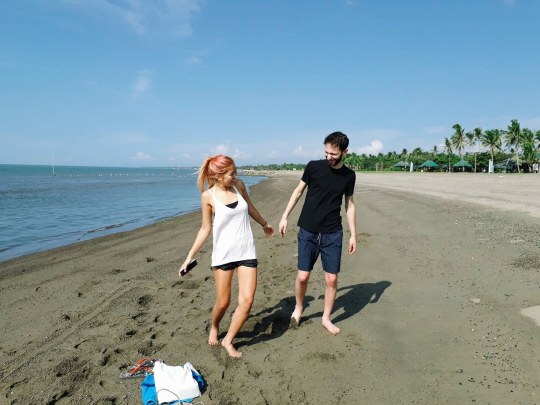
OTON, ILOILO
Our first ever stop upon arriving in Iloilo - Anhawan beach resort where my cousins and I frequented on weekends. About a 10min drive from our house.

Iloilo City - how we Filipinos celebrate when an OFW (Overseas Filipino Worker - hahaha!) comes home. Participating humans consist of dearest family, highschool and college friends.
Alex was so mindblown how the bill only came out Php3500. Roughly $70.

GUIMARAS
Day 2, we visited family from my mom’s side. It took about 15mins via pumpboat. Naturally the whole gang came along.

It’s more provincial than Iloilo. Air is fresher and life is simpler and much slower.

Alex falling in love with my cousin’s Shih Tzu pups


We spent the whole day being toured around Guimaras island via car by my cousins, popping in and out of different beaches and views

My lovely maternal cousins and cousins in law

Met my first niece!

OTON, ILOILO - Nes & Tat’s beach resort
About a 10min walk away from our house. Spent way too much weekends here with cousins and friends as well. So nostalgic!
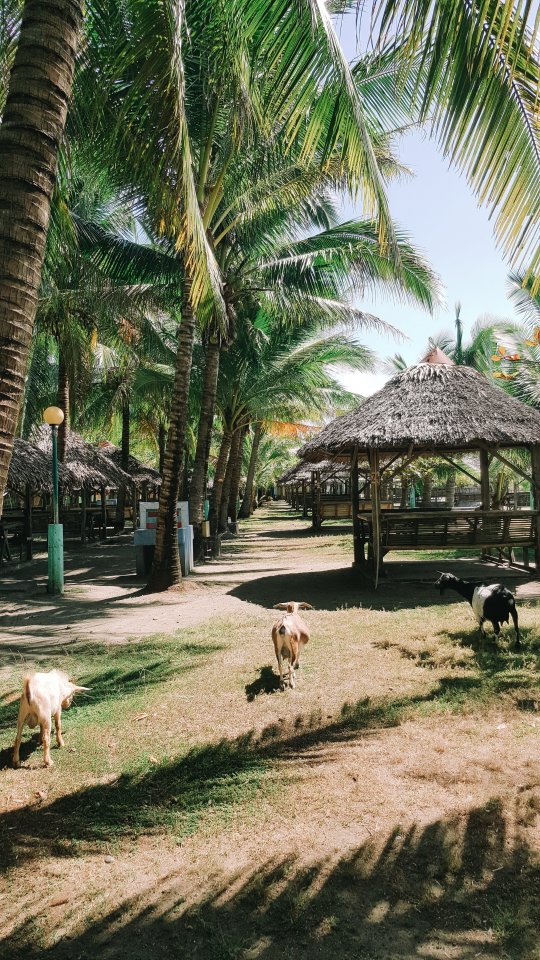

Happy that pretty much everything still looks the same.

We didn’t ask what exactly was going on but it really seemed like goats have taken over the resort haha!

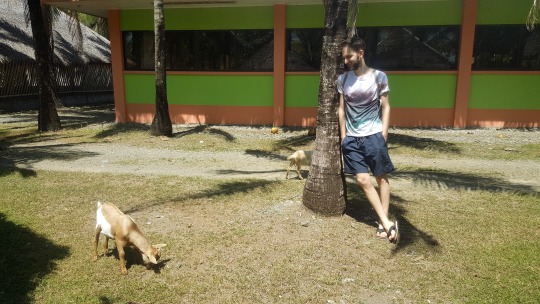
Guimbal church - further south, one of the oldest churches in Iloilo. About a 25min drive from home.

And some more goats.

One was VERY friendly

Family from my mother’s side. Silver haired woman on the left is my mom’s fraternal twin sister and woman not looking is my grandmother.

College friends and I showing Alex how kareoke is just another favorite islander activity. Also our last day night in Iloilo.

We had to relocate to the building’s garage cause they had to close



My bestfriends, my cousins that I grew up with. We lived together under one roof since I had to move to the states in 2011. Tall guy behind is my cousin Monica’s suitor. So traditional, so cute. And Josh who’s beside Alex is same age as Ryan

BACOLOD - a neighboring island, a city about 2hrs via ferry from Iloilo
L-R: Moses & Fergie, my highschool bestfriends, cousin Monica & Tita (aunt) May.
Without my grandma in Iloilo, Tita May spoiled us with the best lutong bahay, literally meaning cooked at home. She made the usually pork/chicken-based Filipino dishes vegan. It was the best treat, Alex said it was like waking up to a hotel with the heartiest meal every morning. On top of that were the sweetest tropical fruits and native pastries. ( I have to find those pictures to add them here!!!)
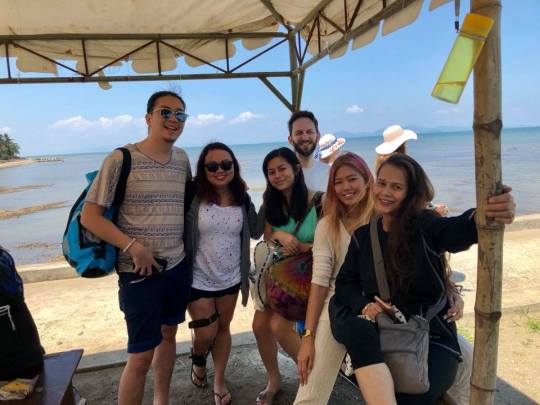
LAKAWON BEACH RESORT, BACOLOD
Quiet little paradise. I wish my whole Iloilo fam were there but my uncle had to a major construction project going on, cousin Clarisa had a concert booked many months ago in Manila and my youngest cousin Josh had his prom the night before and couldn’t make it to our early call time.

Testing our outdoor/underwater camera. One of my fave pics on this trip. Philippine sun looks good on Alex!

Sharing some yoga fun and bliss with loved ones.

So happy my highschool bestfriends took off from work to spend the weekend with us though!
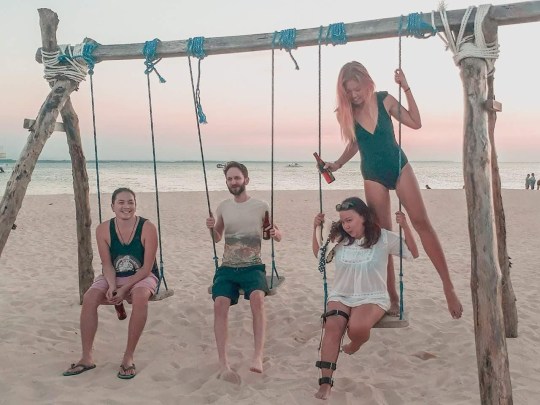
We did a 20min sunrise yoga and meditation led by Alex and myself. They loved it.



Twisty unpside down tripod

We woke up early for this view! Nothing like sunrise watching with special people by your side.


Next eldest cousin, Monica
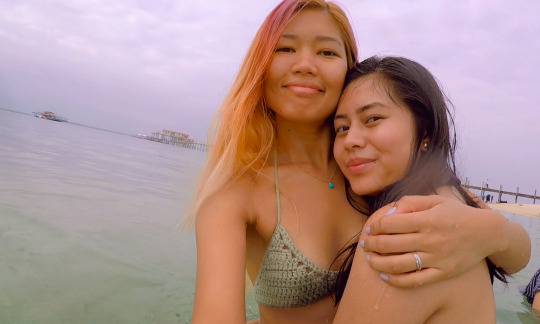
My little sunshine

CEBU CITY - 45min plane ride away from Iloilo
My uncle conviced us to spend the night at his mother and sister’s place instead of a hotel.
They had a framing business and an art gallery.
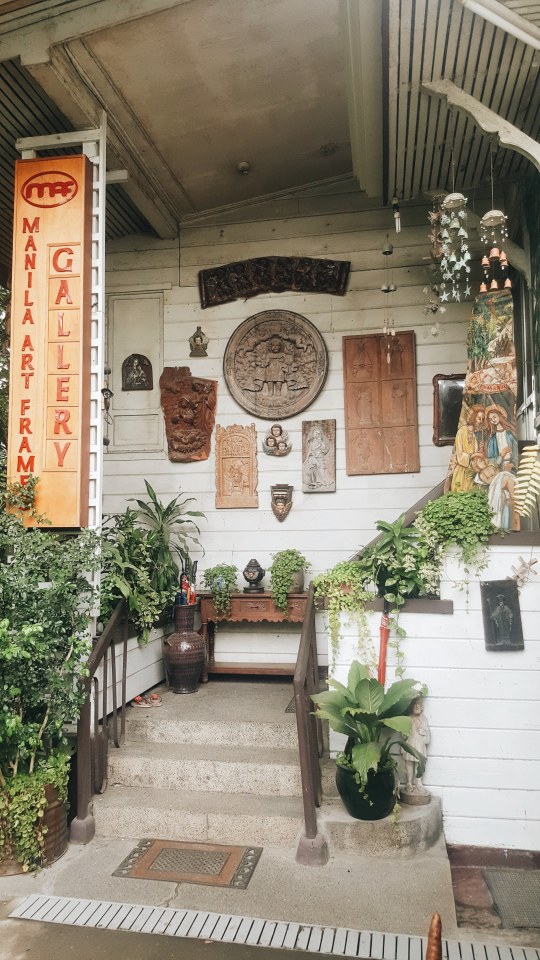
Hearty Filipino dinner spread over catching up and exchanging of stories. How spoiled are we!

They had a mattress brought out and placed in the middle of the gallery for us. It was so dreamy.


Next day was Valentine’s day, thus the all red ensemble. Saying goodbye after another hearty meal before we headed down south to Badian, Cebu.

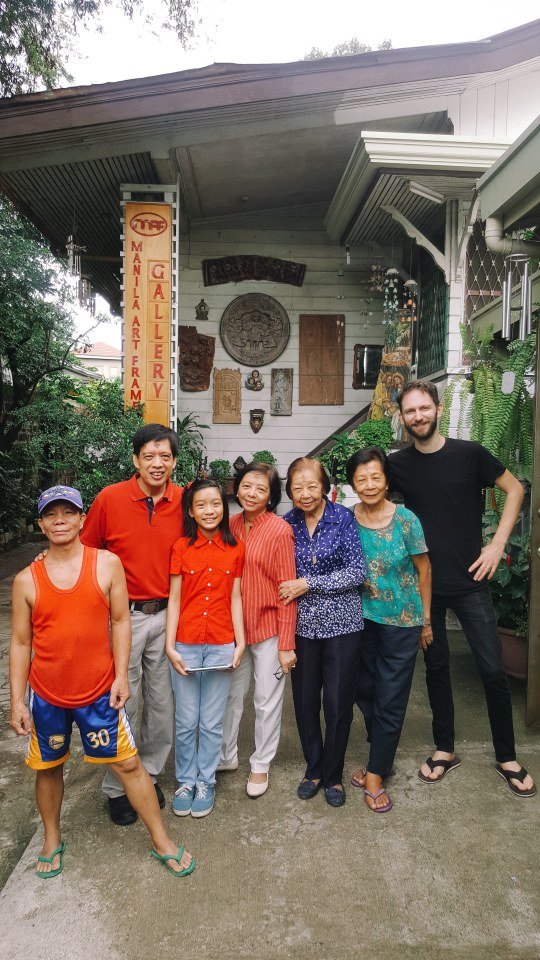
BADIAN CEBU - rainforest, canyoneering, waterfalls

This was supposed to be our canyoneering day but it got canceled due to a typhoon. We explored the area instead and found ourselves the infamous Kawasan Waterfalls.
After 4 hours of canyoneering the next day, little did we know we were gonna be invited to jump this waterfall by our tour guides. The last and grandest jump of many.


all about that provincial life


“exploring the neighborhood”, Philippines style

After being told that canyoneering might still be held off the next day due to the typhoon (though it was already on it’s way to another part of the country), we woke up to a go signal, woohoo!

Only best shared with this human.
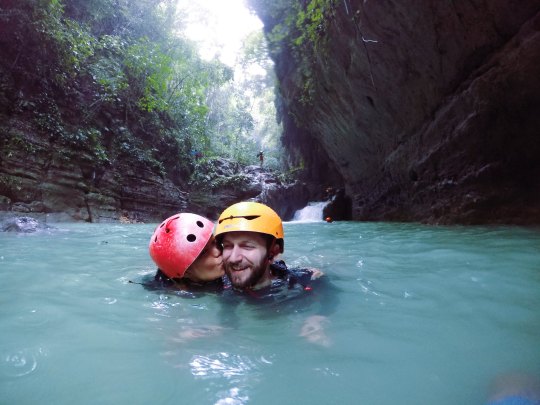
It’s as dreamy as it looks. Just a bitty chilly.




Bedroom view
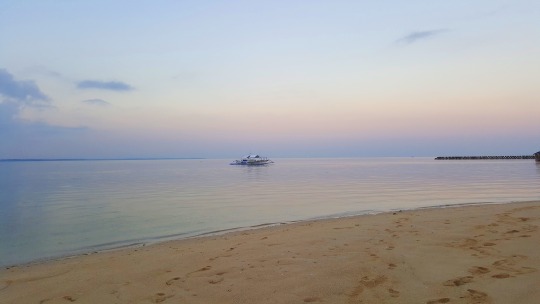
SANTANDER, CEBU
Two days later, further south, we woke up to this beautiful farm. At this point, I really felt ever so embraced, pampered by nature.


Listening to a schirping oundbath from the farm’s resident birds


Three hours later, we were in a ferry on our way to Siquijor. Known as the mystic island where most mountain-dwelling shamans, healers witch doctors are from, I actually grew up fearing even just the name of the place.
Over the years though, this reputation has been dispelled, thanks to social media maybe? Travel-thirsty explorers made the island more and more famous each year through word of mouth and of course, blogs, instagram and facebook.
It was more beautiful than I’d ever imagined.


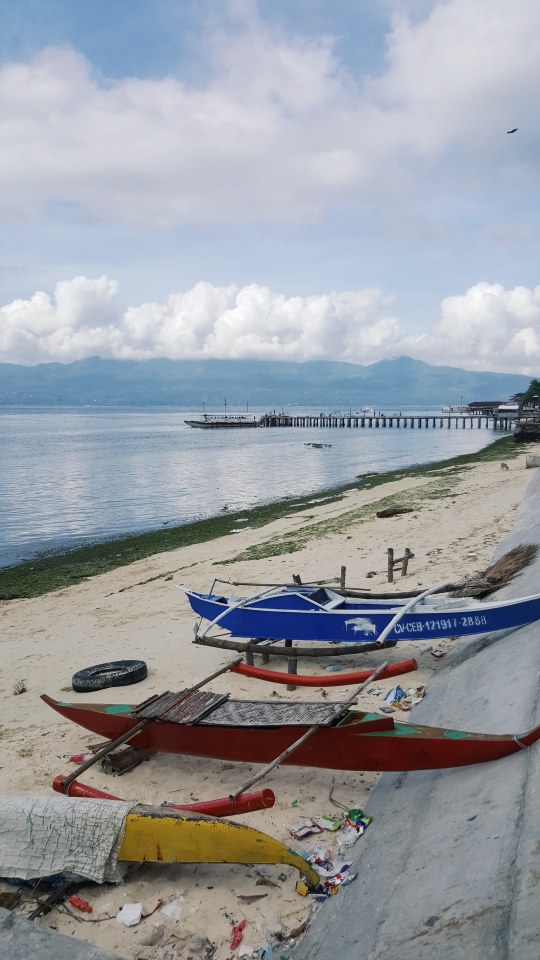
I can’t believe we actually stayed in this beautiful paradise.

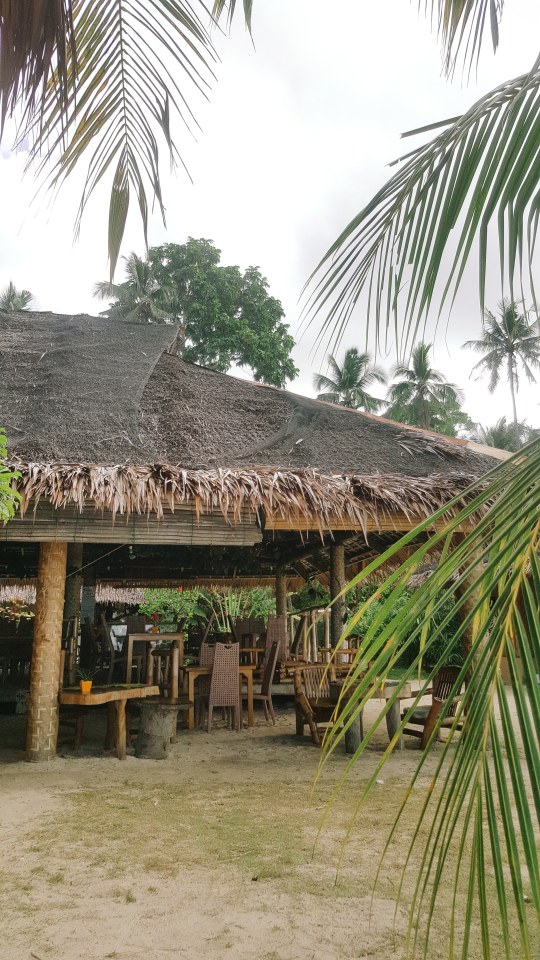

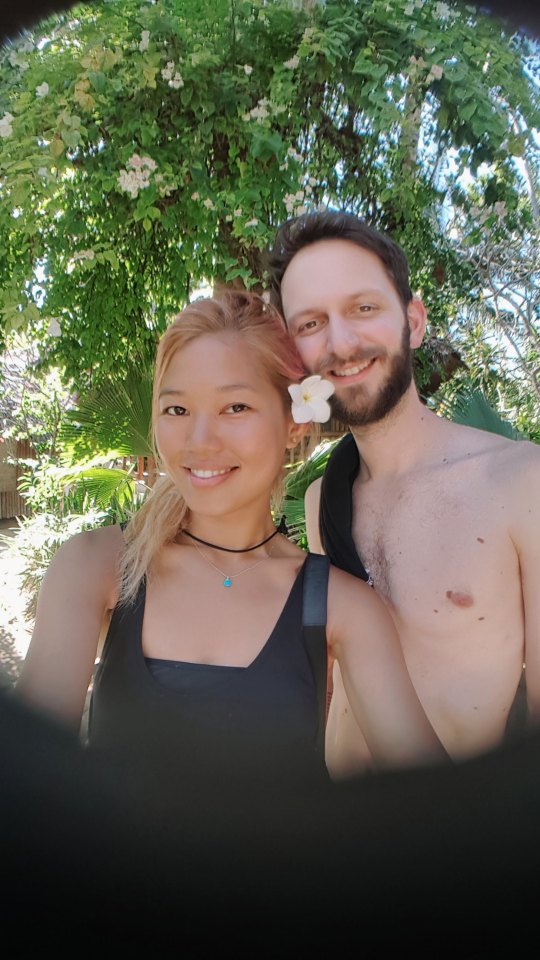

Plus a yoga studio???
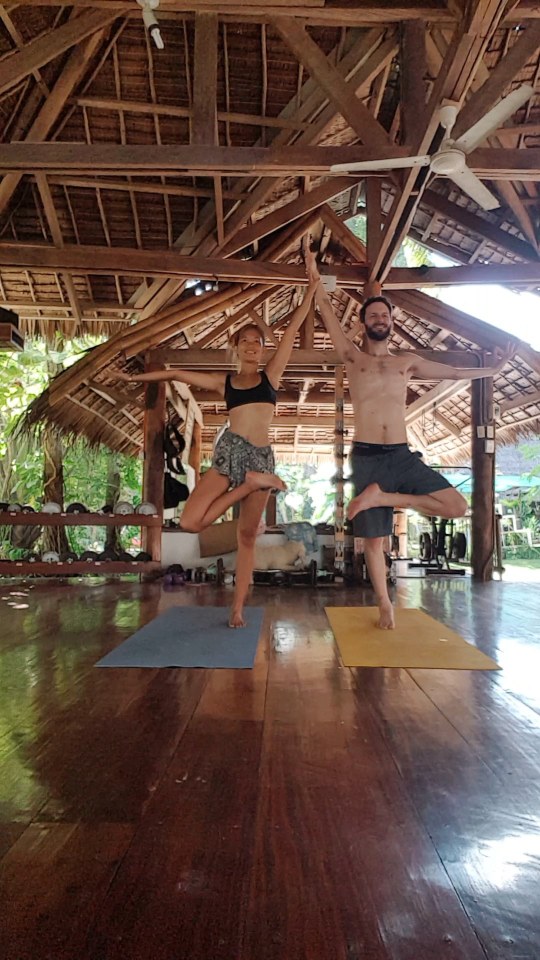
Breakfast of champs!
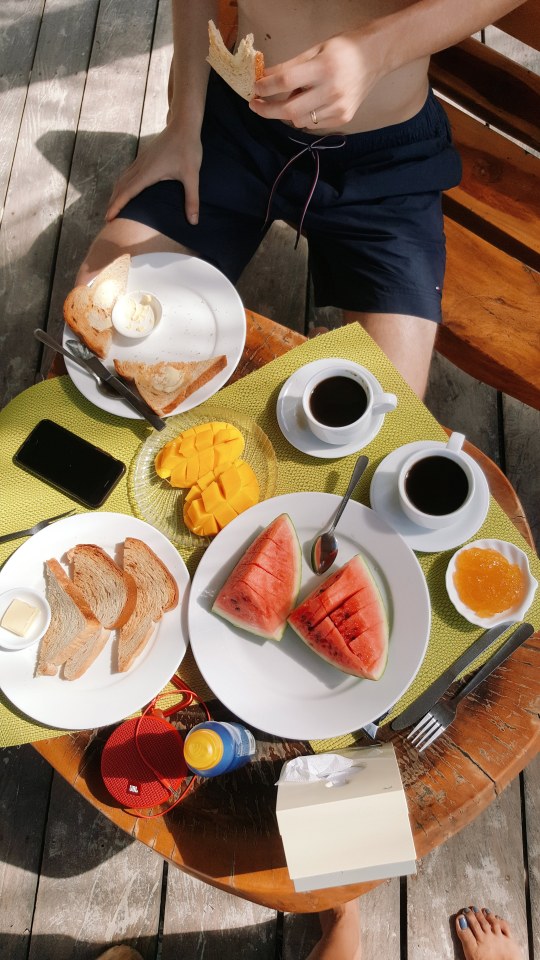
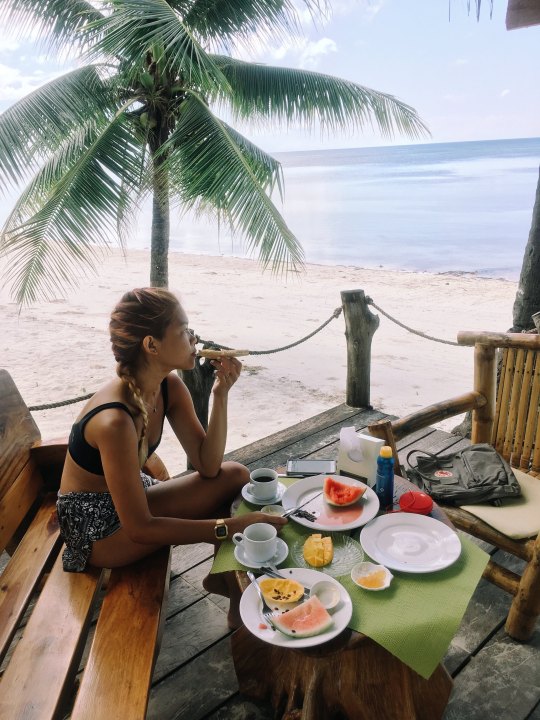
Breakfast with a view is an understatement on this one

And playful island pups????

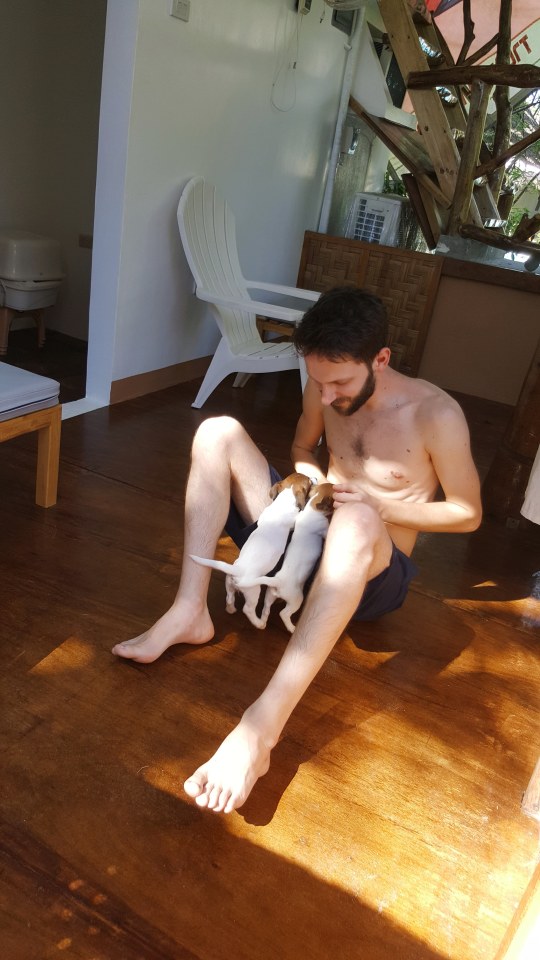

400year old Balete tree
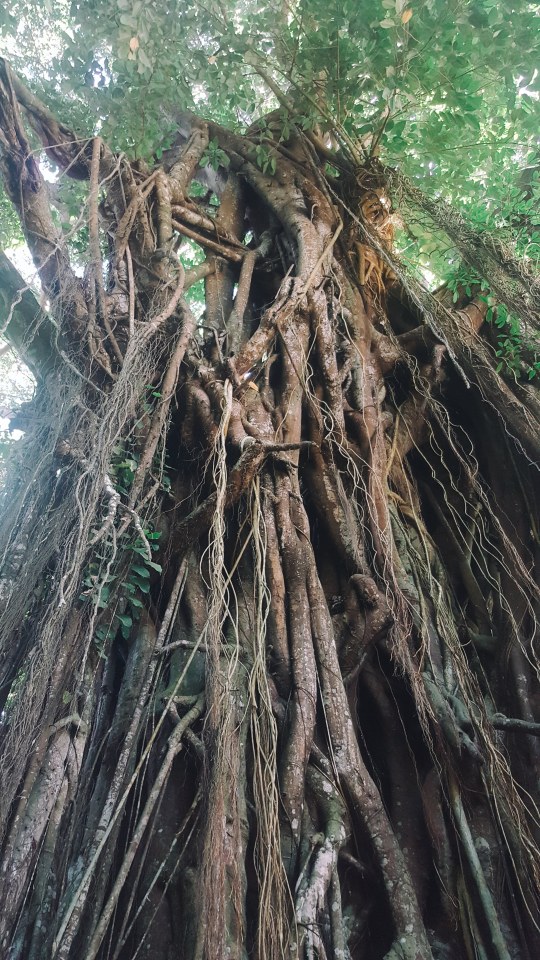
Ancient church in Siquijor


Cambugahay falls. What a sight. What a feeling.

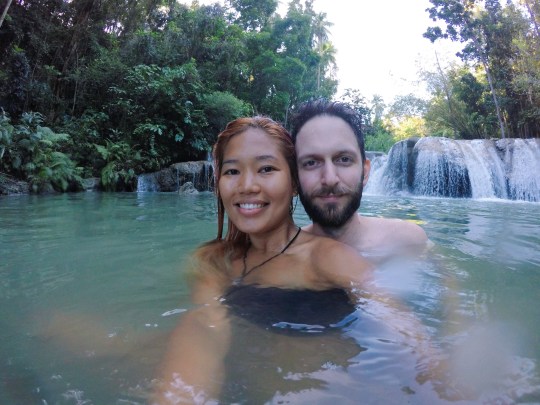

We had the sweetest tricycle driver who took us around. Apparently Siquijor is the third smallest province in the country. Like Guimaras, you can also drive through the whole island in one day.
Thankfully, Alex doesn’t have to tild his head sideways or crouch because the roof is tall enough. The other ones, including jeepneys (our mode of public transportation in Iloilo) he had to because he was too tall for it. Way too tall, haha!

Golden hour at Salagdoong beach. There was another ledge with a 35ft drop in the water but we were too spent, literally from jumping waterfalls and from one place to another. We opted for sunset watching & cold beer, mmmm!

Day2 at Siquijor, unveiling the beauty of Lugnason Falls. This one is so underhyped which is a good thing. It was quiet and there was just a couple when we got in.


These sunkissed boys are tour guides that’ll meet you by the road before descending your way to the falls. It’s not allowed to go to the waterfalls without them. Beside Alex is our guide, Ricky. He’s a wild one and I love it. I thought I was done jumping for the day, still feeling the effects of the previous days’ jumps. Alex and I were swimming and hanging out when from above, I heard Ricky calling me and pointing the giby his side “She’s gonna do it! Come on up Christine, jump!!!!” And I was like “Say no more!!!!!” It was a 35ft drop and felt like heaven. I bade Siquijor, my favorite one goodbye by jumping 3 (or 4???) times.

Siquijor forever in my heart


PUERTO PRINCESA, PALAWAN
Our new home for two nights!!

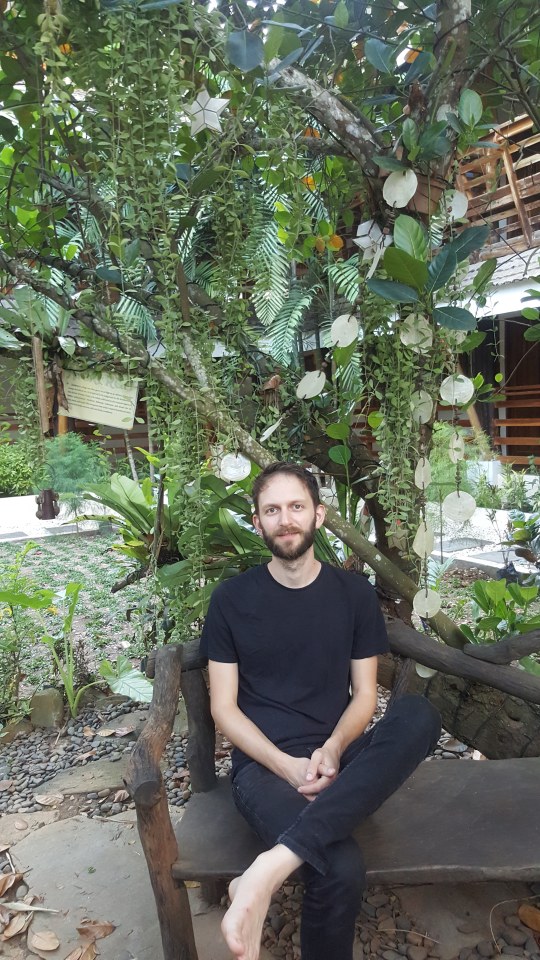
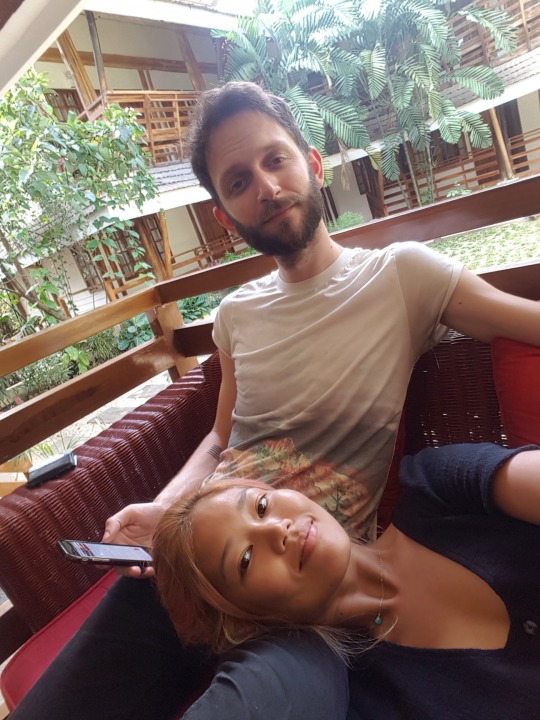
Place is not by the beach but they had pools and we were not complaining!!!
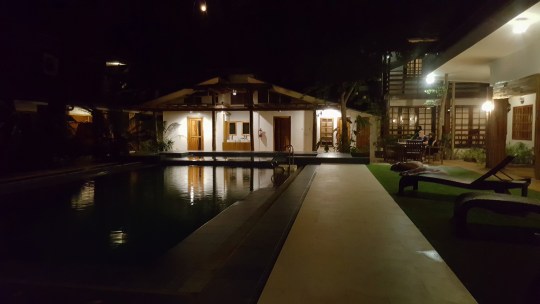

Squeezed in a quick but intense hike at Mt. Magarwak. For roughly 2 hrs back and forth, we climbed up the steep mountain for that extra toasty look, haha!
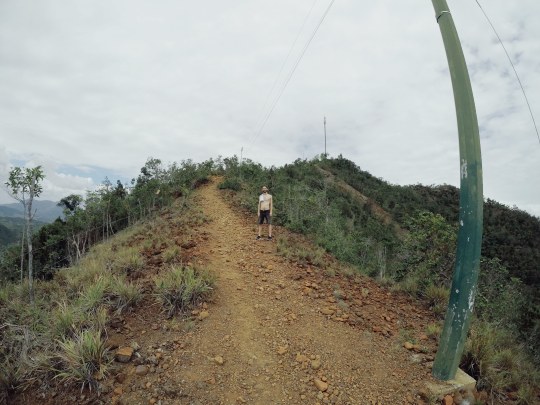
Alex’s breakfast buds and good morning committee. The next morning there were four.

EL NIDO, PALAWAN
Currently one of the most hyped places in the country. But rightfully so. People are sweet and the beaches are like no other. Though I might have said or felt it for every destination we have been to :)
Another super sweet tricycle driver who made our afternoon trip to Nacpan Beach such a magical one. He insisted on us going all the way, further in to the beach so we can have a more private beach to ourselves. AND BOY, WE DID.



Countless coconut trees welcoming us to Nacpan Beach
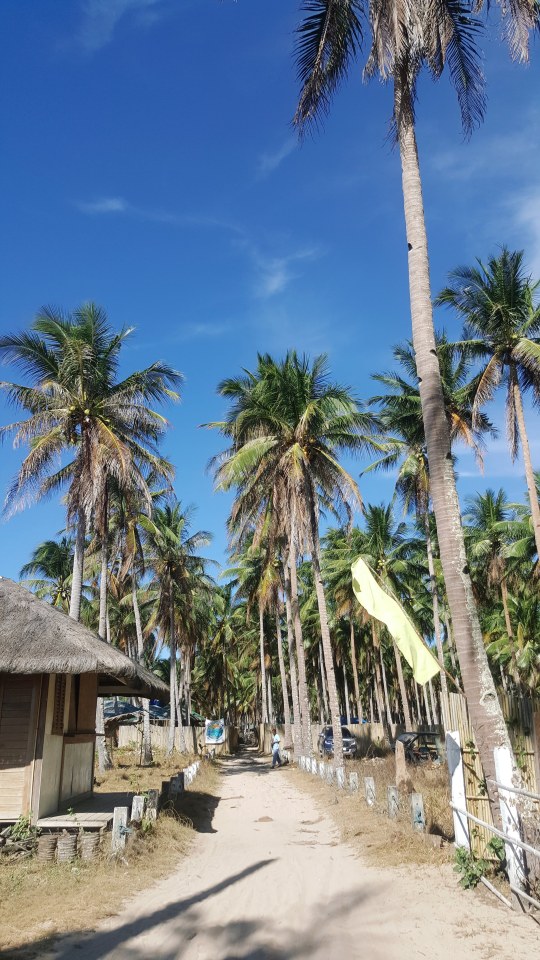
We were joined by my highschool friend, Kitz. She also doubles as secondary tour manager and customer service whenever we need to do some sorting over the phone.
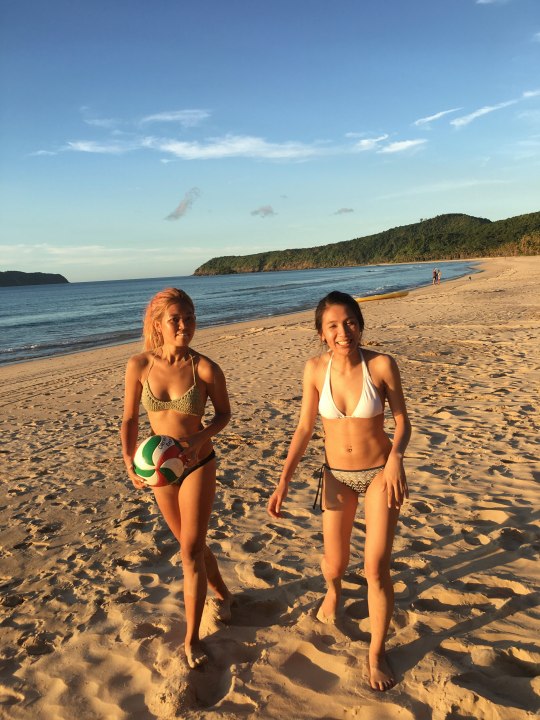
Unforgettable afternoon with these lovelies

Golden bliss









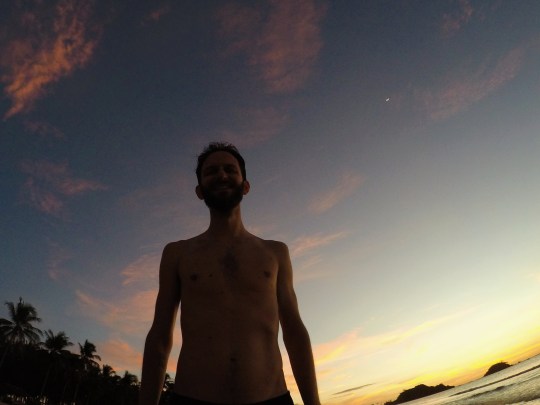

Moon rise cheshire smile
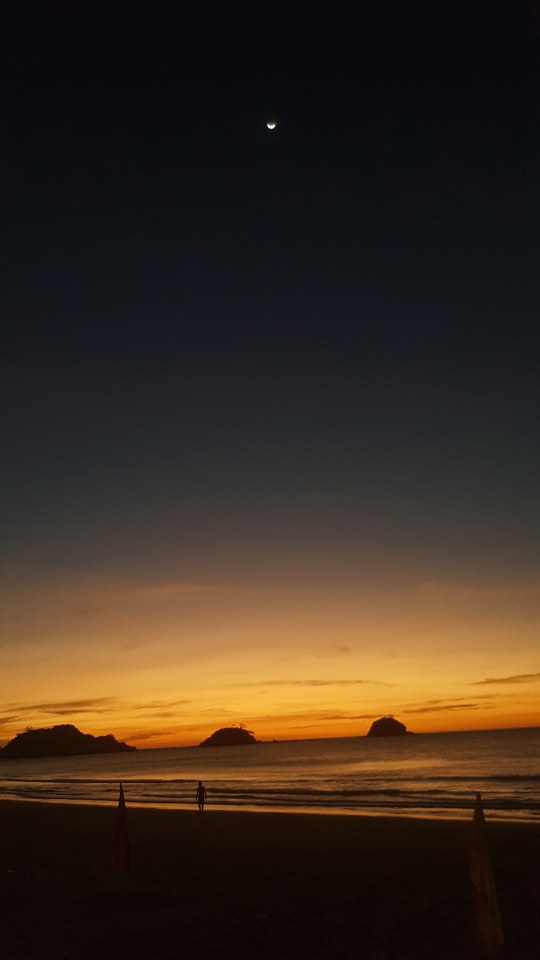
EL NIDO Day2- island tour
This boat was almost made for us

We saw roughly 9 or 10 islands all day


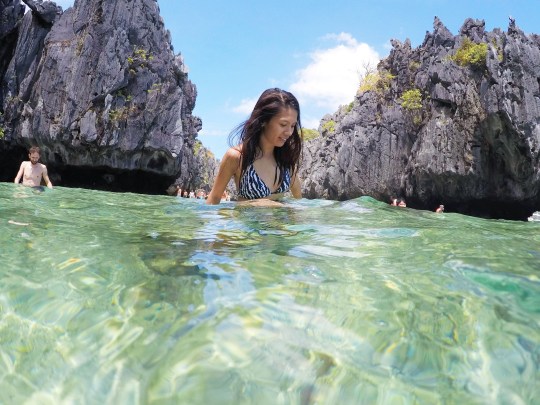
Stalking Alex stalking fishes




Hidden Beach




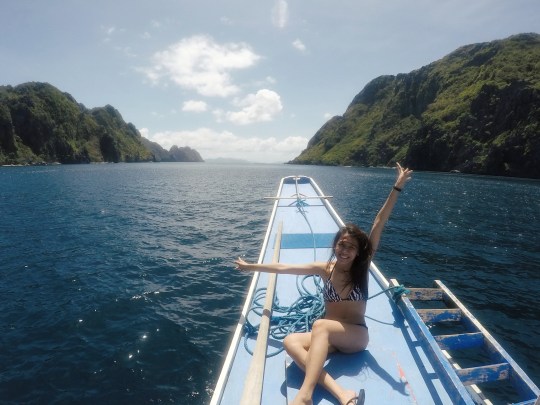
Best snorkeling experience ever


Paddling to the lagoons. I have better footage here but in video form. I will have to edit and compile them soon!
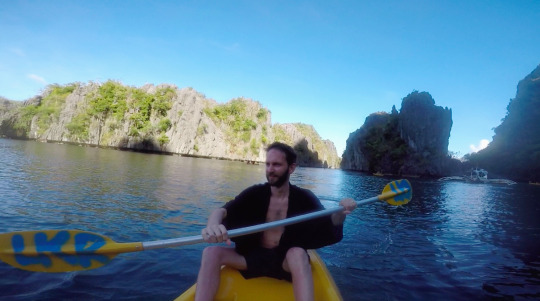


MANILA

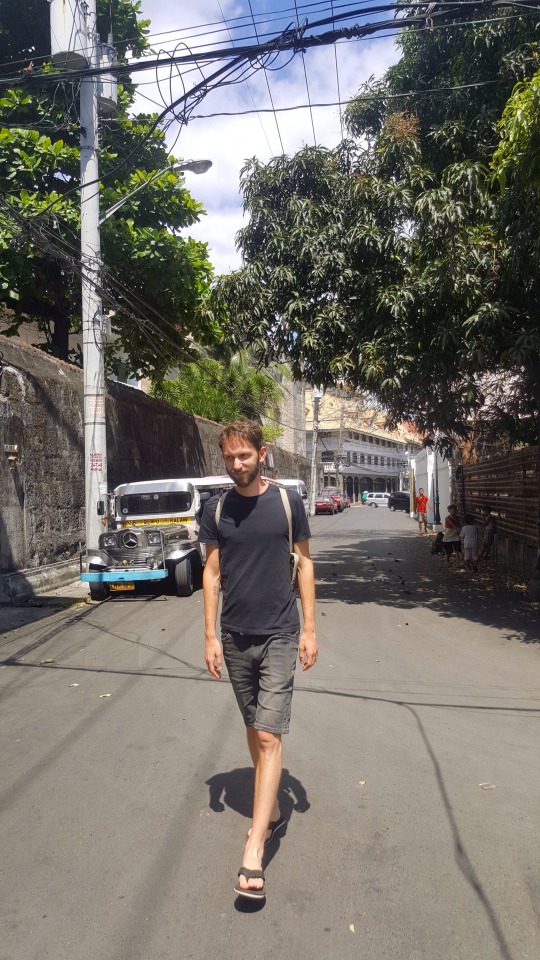
National Museum

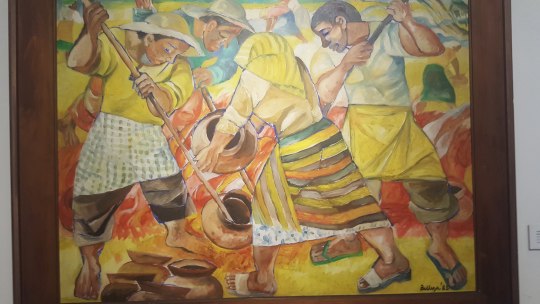
300 yr old (???) St. Agustine Church

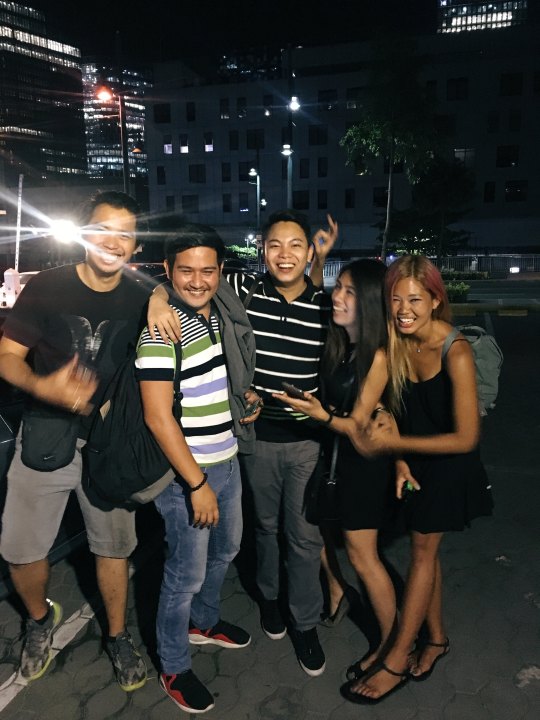
Last hurrah with friends based in Manila

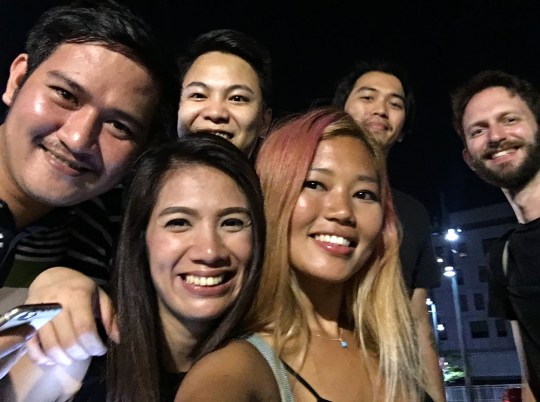
Happy puppy
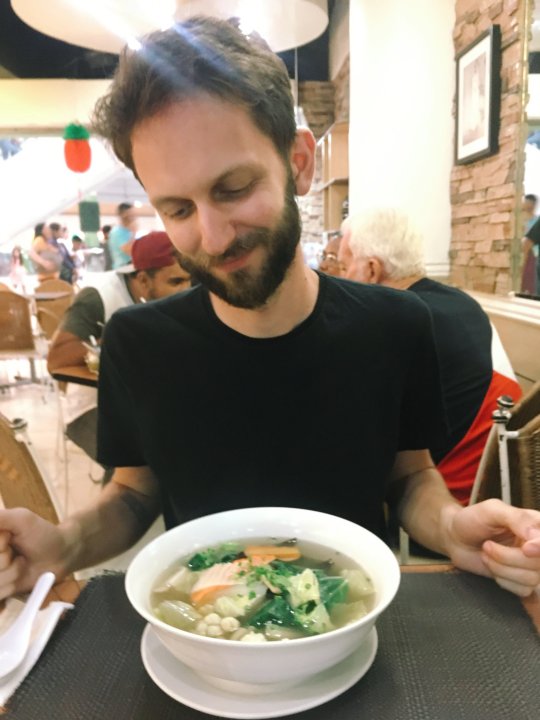
Bye PH, you are perfect.

0 notes
Text
“Lei”dies take Hawaii
My friend Danielle from Architecture at Penn State was the president for the society of architecture students (AIAS) that wrapped up in August 2016. One month later she started in job in Honolulu, Hawaii....AMAZING right?! Two months after her move, myself and three friends booked our trip to visit her. Never in my life did I think I would travel to Hawaii in my 20′s, let alone have my friend MOVE there!!!
I could not have been more blown away at the shear beauty of the islands. The vibrant colors and the contrast of the mountains next to the crystal clear water left my mouth wide open in awe the entire travel. And to share this experience with my best friends made it even that much better. :)
Itinerary:
Thursday, February 23rd 2017: My flight departed Boston at 3pm, quick layover at LAX. The flight to Honolulu had an incredible view. It was pitch black with a million stars in the sky. With no light in sight, the starry sky followed a 180 degree curve of the earth I have never seen before. I should have been exhausted and trying to sleep but all I could do was stare in awe. I landed in Honolulu at midnight. Danielle didn’t wake up to her alarm or my phone calls...but luckily she was also picking her roommate up from the airport too. So the pressure of two people finally got her butt there just 30 minutes late.
Friday: Danielle got us all real leis! So in the most touristy fashion, we decided to all wear ours allll day. :) Danielle had to work, so Julia, Meghan, Kelsey, and I all walked to work with her and then went to breakfast. My breakfast included the first of many taro (purple root veggie) renditions and deeeelicious coffee. Seriously I had no idea the brewed coffee was going to be SO good in Hawaii! We then hike Diamond Head Mountain. Just a bus ride from downtown Honolulu and gives you beautiful view of the city. It was super crowded and started to rain when we got to the top. So treating ourselves with an acai bowl afterwards was a must. Now we tried many acai bowls on our trip, and this one was hands down mine and Meghan’s favorite!!! Besides the purple mashed potato (taro) on it, the natural, grainy honey and bee pollen made it to die for! We then headed to Waikiki beach to relax before grabbing sushi and heading airport for our flight to Kauai! A quick one hour flight, 30 minute drive in the rental car, and grocery store run and we were PTFO at our airbnb.
Saturday: We got up bright and early to hike the Na Pali coast. Hands down the absolutely best hike I think I will ever do in my life!!!! It even beat out hiking Cinque Terre in Italy! The hike starts along the ocean, limitless blue it is incredible. We then took a break at a rocky beach before heading into the mountains where we first hit a bamboo forest. It was beautiful with stone huts and small human traces hidden between the dense bamboo. THEN it got fun with hopping across streams/rivers and climbing up rocks. This was probably the most grueling, fun, and concerning when it comes to rolling ankles because I didn’t bring hiking boots. The hike finishes as Hanakapi’ai falls. It is a 300′ high waterfall that is only accessible by hikers. It is incredibly remote and the rocks that people rest at seem to concave around the falls and make it a very intimate experience. The water was ice cold but oh so refreshing. We were incredibly giddy the hike back because come on, NO ONE expected all of the different elements to be that beautiful. We grabbed some poke (amazing Hawaiian uncooked tuna) and local hawaiian beer and headed to the beach at Hanalei. It felt great to lay out, see the immense mountain range we had just hiked, watch the super cute surfers, and see little Hawaiian kids in awe over the couple getting married on the beach. A couple hours later we started to drive home to only suddenly stop the car and witness a sunset with the most vibrant orange and pink colors all of us have ever seen. Truly it was magical and no pictures can ever do it justice.
Sunday: Adjusting to the time change helped us get up bright and early again to see the sunrise at Kapa’a Beach just a 5 minute walk from our hotel. We then had breakfast (my second favorite acai bowl) at the absolutely cutest place called Hippie Cafe. If I ever open a cafe THIS will be my vision. All natural ingredients, friendly staff, huge outdoor eat spaces, plants/flowers growing that are used in the food. Truly it is a hippie lovers dream...heart eyes emoji to the extremeee! We then drove through the center of the island all around Waimea Canyon. It does resemble the grand canyon except it is a bit more lush with greenery AND you can hear numerous rooster crows echoing everywhere. We went to a black sand beach (the only let-down thus far) and made the long drive to Puka Dog. Truly the best hot dog I have ever had and toootally worth driving too. We then drove through a beautiful tree lined street to get to our helicopter tour! YES we actually did a helicopter tour!!! And YES it was everything and more I could have ever imagined. Kauai is an amazing place for a helicopter ride because it’s terrain is immensely diverse. We saw the canyons, open ocean, and waterfalls on waterfalls. It started to rain in the last leg, BUT it didn’t stop us from this 360 concave area that is around 20 waterfalls hundreds and hundreds of feet high. It is totally unaccessible except helicopter, and the pilot was amazing at getting us very close and at an angle to really feel one with the experience. Gosh I don’t even know how this trip could get any better at this point?! We then showered and headed to a nice dinner in town before passing out very early once again.
Monday: Started our day with another acai bowl and delicious coffee! We then headed to our kayak adventure! We were about 10 minutes into the guided tour when someone frantically was yelling at us from the shore telling us there was major flooding and we could go to Wailua Falls as anticipated. We could either get a half refund or do the tour the next day. Since our flight was later that evening...and we didn’t exactly want the refund...the guide was more then happy to do a improv tour with just us 5! It was awesome!! We went to the fern grotto and no other tourist was in sight. We then went to a secret cliff jumping spot to eat lunch and crack open a coconut too! The guide had adorable pigtails, was stick thin, and was as tan as could be. She whipped out a drum while we were cliff jumping too! She was totally one with the earth and could not have been friendlier. After another amazing (should I have been surprised anymore??) we grabbed some quick poke and rushed to the airport to fly back to Oahu. Julia, unfortunately, flew home to the “mainland” that night so it was just Kelsey, Meghan, and I noodling around while Danielle had to work during the week.
Tuesday: We started our day with breakfast at Aloha cafe and tried ginormous souffle pancakes! When they came out they looked HUGE and we had no idea how we could finish all of that food. But after one bite, we totally could have ordered one more!! They tasted like extremely lightweight angel food cake that just melts in your mouth. YUM! We then picked up a rental car to drive to Pearl Harbor and reserve our tickets for the afternoon. In the meantime, we checked out the Dole Plantation. We got delicious frozen puree pineapple and saw the cutest, tiniest purple pineapples. We then checked out Wahiawa Botanical Garden which had an extraordinary variety of plants for such a small garden! My favorite were the trees that looked like paint was dripping down the trunk. We grabbed some Mexican by the Navy base then head to Pearl Harbor! First time our age group was in the minority the entire trip... Unfortunately either the heavy Mexican food mixed with the dark theater put me to sleep for a majority of the short intro documentary. Then we took a boat out to the site of ... there was still gas seeping into the water. Is this just dramatic effect because I sure hope that someone would have done something to prevent this by now?! It was VERY interesting to compare how Americans market this attack vs. how the Japanese marketing the attacks of WWII. Americans much less tell the facts but go for the heart-felt stories. All in all, Japan bombed the Navy base, not the city of Honolulu. America bombed the ENTIRE city of Hiroshima...civilians and all. All just let those facts simmer for a little... Anywho then we headed to our airbnb at the North Shore. This was our largest hiccup of the trip...the airbnb host wasn’t responding to ANY of my messages and finally 20 minutes before we were going to get a full refund we finally heard from him. The place was unfortunately a drive from the town of Haleiwa, BUT it had the most incredible view of the ocean from the rain shower. At one point there was a double rainbow outside and I don’t think I can ever top a shower view like that. We had dinner at a Opal Thai that had amazing reviews online. We got there with our BYOB wine and after the first hour of waiting and the rain coming down, we decided to open one of our bottles. Another hour and a half later we FINALLY got seated and surprising enough, it was totally worth it. There were no menus, we just told the owner what flavors we like/dislike and he had a series of surprise dishes come out for us. Our favorite was his “special.” When we asked him what it was, he grabbed Kelsey’s had a drew a stingray on it! AMAZING! We went to bed with full bellies and happy hearts (yet again.) :)
Wednesday: A very rainy morning and we still drove along the North Shore to a acai bowl food truck! Obvi well worth the drive. It started to clear up and we had an empty beach to watch the most adventurous of surfers tackle the Banzai Pipeline. We then drove south to an old sugar mill that is turned into a coffee plan/market. Old Sugar Mill was great for touristy gifts and we even got a tour of the coffee plant process. For lunch I had the most amazing pork burrito I’ve ever had at Kono’s. We then drove alllll the way north to sneak into the pools at Turtle Bay. It was very obvious that we did not below but luckily the rain cleared out the pool and allowed us to snatch some left over towels and lay on our chairs to look even more like noobs trying too hard. The hot tubs were nice though...but the resort is much too secluded for me. We showered and grabbed drinks and dinner in town to only pass out early once again.
Thursday: Our last day at the North Shore and finally some sunny beach weather! We did lots of beach hopping. We started at Shark’s cove and wished we had some water shoes to peak around the tide pools. Then we checked out the food trucks and I had the legendary North Shore Shrimp. They were quite huge and were a little too buttery for me but they were still good! We rented bikes and rode towards the secluded residential beaches just north of Shark’s Cove. Then we drove all the way around the eastern shore of the island to get to Danielle’s in Honolulu. This drive will always be in my memory for how close the mountains and ocean REALLY were there!! The tops of the mountains were even covered in a misty haze, which made their heights very deceiving. We had dinner with Danielle at Duke’s, which is right along the water at Waikiki Beach. Meghan and i had been to their location in Malibu with Jenna when i came to visit them one summer during college. Now the Mai Tai’s were good, but the Lava Flow Kelsey got was phenomenal...have pina colada half strawberry daquiri.
Friday: Danielle called in “sick” to work so that we could go scuba diving that day!!! Her roommate is a scuba diving instructor, so we got an amazing deal and personal service when we were there. It is way more difficult that I expected too!!! It feels very suffocating and claustrophobic to go under water because your breath is so controlled. And if you freak out, you have to very slowly come to the surface for air. The first dive I was down waiting for everyone to descend for forever it made it nervous they had forgotten about me. BUT I did have schools of beautiful fish and a couple sea turtles swim verrrry close to me. Because the water was so clear it was way less scary then I anticipated...actually quite calming. The vulnerability aspect and being submerged entirely in a different environment was very freeing. The first dive is where we saw a majority of the sea turtles. The second dive was more cloudy, a longer swim, and we did get to see more varieties of fish. Unfortunately my goggles weren’t clean for the second dive, so I didn’t get to take in everythinggg but it was still awesome. The boat was SO rocky that I felt horrible for all the Japanese tourists (and Meghan lol) that were so sea sick. I knew I would get it too if I stayed on the boat so I snorkeled around while we waited for other divers. Being on a boat was an excellent way to really take in the mountainous island and it’s beauty. We then spent the afternoon at Waimanalo Beach to then see the sunset at the most incredible spot EVER! We had to walk down this narrow dirt path, to then climb down stairs to reach natural rocks that had tons of people playing ukeleles, drinking, and jumping off the edge! Whale were breaching in the distance and it was just truly magical. We never ended up going out ONE night because we did so many activities during the day we were too pooped to get ourselves to go out.
Saturday: We got up the earliest on our last day for...a sunrise hike! We did the pillbox hike, which is quick but you sit at abandoned bunkers to see the water rise over the ocean. We went to the beach were everyone did some early boozing while I took a nap. Then grabbed one last acai bowl and checked out some more hidden gems in the area. We climbed down the rocks to the adorable beach right next to the blow hole AND Danielle and her boyfriend took us to this super sneaky spot that is truly stone eroded away by the tides. We took Meghan and Kelsey to the airport while i then went over to Danielle’s boyfriend’s parent’s house for traditional pupu with this family. So cool! They are Japanese but have lived in Hawaii for 5 generations, but still don’t consider themselves “Hawaiian.” We then grabbed drinks at this super trendy craft cocktail place and then drove to get beautiful view of the city at night.
I would have never expected this trip to have been as amazing as it was. If I ever go to a tropical island in the future, it has HUGE shoes to fill! :)
0 notes